
How to Fix the Future: Staying Human in the Digital Age
by
Andrew Keen
Published 1 Mar 2018
Written by Ralph Nader, the book was called Unsafe at Any Speed: The Designed-In Dangers of the American Automobile, and just as Rachel Carson’s 1962 bestseller Silent Spring dramatically raised public consciousness about the dangers of pesticides and toxic chemicals in our foods, so Nader’s 1965 book did the same thing for the deadly dangers of American automobiles. The most interesting presentation at DLD was by a young German entrepreneur called Marc Al-Hames, the co-CEO of Cliqz, the new internet browser and search engine. Al-Hames’s speech, borrowing from Nader’s 1965 bestseller, was titled “Unsafe at Any Speed.” The first slide Al-Hames showed to the DLD audience was of a brand-new two-door convertible red Corvair, a car manufactured by the American automobile company Chevrolet between 1960 and 1969.
…
Steven Perlberg, “New York Times Readies Ad-Free Digital Subscription Model,” Wall Street Journal, June 20, 2016. 12. Ken Doctor, “Behind the Times Surge to 2.5 Million Subscribers,” Politico, December 5, 2016. 13. Gordon E. Moore, “Cramming More Components onto Integrated Circuits,” Electronics, April 19, 1965. 14. Ralph Nader, Unsafe at Any Speed: The Designed-In Dangers of American Automobiles (Simon & Schuster, 1965), vi. 15. Christopher Jensen, “50 Years Ago, ‘Unsafe at Any Speed’ Shook the Auto World,” New York Times, November 26, 2015. 16. Ibid. 17. Lee Rainie, “The State of Privacy in Post-Snowden America,” Pew Research Center, September 21, 2016. Chapter Eight 1. Huw Price, Time’s Arrow and Archimedes’ Point (Oxford University Press, 1996), 6. 2.
…
Peter Sunde has learned from his youthful mistakes. Rather than participating in the killing of our culture, he is now working on its rebirth. It might have taken him a while to arrive at More’s Law, but in his attempt to reinvent both himself and the internet, he has become a valuable player on Team Human. Unsafe at Any Speed At Europe’s most prestigious tech gathering, the Digital Life Design (DLD) Conference in Munich—that same event, you’ll remember, where the EU antitrust chief Margrethe Vestager confessed to being unconcerned about the fragmentation of the internet—there was speculation about Germany’s chances of winning the second half of the Industrie 4.0 game to control today’s internet of things.
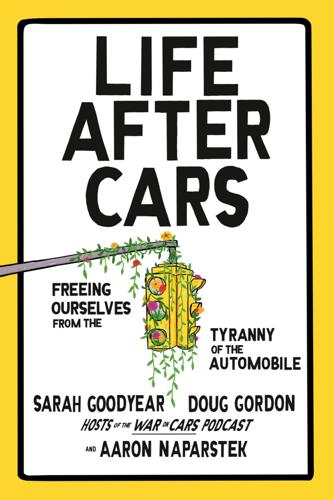
Life After Cars: Freeing Ourselves From the Tyranny of the Automobile
by
Sarah Goodyear
,
Doug Gordon
and
Aaron Naparstek
Published 21 Oct 2025
As we’ll see in the next chapter, when it comes to death and illness caused by cars, we may be more hardened to the fate of millions of our fellow human beings than we think—especially compared with the mourning we witnessed for one well-liked owl on Central Park Drive. 5 Cars Are Killing Us “For over half a century the automobile has brought death, injury, and the most inestimable sorrow and deprivation to millions of people.” So wrote Ralph Nader in his 1965 bombshell book, Unsafe at Any Speed: The Designed-In Dangers of the American Automobile. It would only get worse, he predicted: “A 1959 Department of Commerce report projected that 51,000 persons would be killed by automobiles in 1975. That figure will probably be reached in 1965, a decade ahead of schedule.” Nader was desperate to convey his message: Despite the grandiose claims that boosters made about automobiles’ unmitigated positive effect on the human condition, cars were killing us in hideous numbers—most obviously by collisions between their chrome and steel bodies and our own bodies of soft and vulnerable flesh, but also through the pollutants they spewed into our air.
…
We must ignore the soot on the windowsill, or else we would have to admit it is also inside our lungs. The details and the scale of suffering represented by the cold, hard statistics of automobile-induced injury and fatality are difficult to comprehend. So we mostly don’t try. Toward the beginning of Unsafe at Any Speed, Ralph Nader quoted a transportation specialist named Wilfred Owen, who wrote way back in 1946, “There is little question that the public will not tolerate for long an annual traffic toll of forty to fifty thousand fatalities.” “Time,” wrote Nader in his 1965 attack on the negligent auto industry, “has shown Owen to be wrong.”
…
The very people least likely to own cars are the ones who suffer the greatest medical burdens caused by their use—although because of the high cost of health care in developed nations, it’s actually the wealthiest countries that take the biggest financial hit from car-induced disease. This is not news to the people in power. Doctors, politicians, and carmakers have all known about the disastrous effects of automobile pollution for generations. When Nader wrote Unsafe at Any Speed, air pollution was so extreme that it was literally causing crashes: “Emissions have frequently curtailed highway visibility to the point where freeways have been temporarily cleared of traffic to avoid chain accidents,” he wrote. Even so, it was already widely recognized that “the health hazard posed by various combustive by-products is of a far more serious nature than the problem of reduced visibility.”
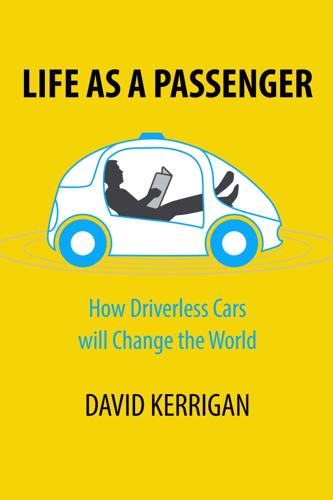
Life as a Passenger: How Driverless Cars Will Change the World
by
David Kerrigan
Published 18 Jun 2017
In 1896 there were only four cars registered in all the United States. Two of them collided with each other in St. Louis. Although the high death toll from widespread car ownership had been the norm decades, it was really the 1960s that saw the first concerted efforts towards improving safety. Ralph Nader’s seminal book, “Unsafe at Any Speed”, exposed the lack of interest in safety matters among major automobile manufacturers. Bridget Driscoll (1851–17 August 1896) has the unenviable position in history of being the first pedestrian victim of an automobile collision in Great Britain. Driscoll was struck by an automobile belonging to the Anglo-French Motor Carriage Company that was giving demonstration rides.
…
However, the Royal Society for the Prevention of Accidents estimate over half a million people had since been killed on UK roads by 2010. “For over half a century, the automobile has brought death, injury and the most inestimable sorrow and deprivation to millions of people.” Page 1, Unsafe at Any Speed [149] Published in November 1965, the first sentence of this landmark book from attorney Ralph Nader did not mince words. The rest of the book continued in the same vein decrying the gap between existing design and attainable safety and the auto industry’s ignoring of the moral imperative to keep people safer.
…
D=NHTSA-2016-0090-1115 [124] https://www.mckinsey.de/files/automotive_revolution_perspective_towards_2030.pdf [125] http://fingfx.thomsonreuters.com/gfx/rngs/SELFDRIVING-SUPPLIERS/010040KW194/index.html [126] https://www.bloomberg.com/graphics/2016-merging-tech-and-cars/ [127] http://www.cnbc.com/2017/01/09/ford-aims-for-self-driving-car-with-no-gas-pedal-no-steering-wheel-in-5-years-ceo-says.html [128] https://www.bloomberg.com/news/articles/2017-02-10/ford-investing-1-billion-in-ex-google-uber-engineers-startup [129] https://medium.com/@ford/building-fords-next-generation-autonomous-development-vehicle-82a6160a7965#.uojw6ib99 [130] http://fortune.com/self-driving-cars-silicon-valley-detroit/ [131] http://mashable.com/2015/10/22/cadillac-autonomous-driving/#WKolOgN4hgqS [132] http://www.cnbc.com/2016/06/16/rolls-royce-ditches-the-chauffeur-in-this-futuristic-concept-car.html [133] https://www.slideshare.net/Altimeter/the-race-to-2021-the-state-of-autonomous-vehicles-and-a-whos-who-of-industry-drivers [134] https://www.forbes.com/sites/oliverwyman/2017/05/17/google-racks-up-more-patents-than-most-automakers-on-connected-and-self-driving-cars/#15cf3e8041ef [135] http://www.theicct.org/blogs/staff/second-million-electric-vehicles [136] http://asirt.org/initiatives/informing-road-users/road-safety-facts/road-crash-statistics [137] https://crashstats.nhtsa.dot.gov/Api/Public/ViewPublication/812013 [138] https://crashstats.nhtsa.dot.gov/Api/Public/ViewPublication/812348 [139] https://www.nytimes.com/2017/03/07/opinion/a-public-health-crisis-that-we-can-fix.html [140] http://www.nsc.org/NewsDocuments/2017/12-month-estimates.pdf [141] https://www.cdc.gov/nchs/fastats/injury.htm [142] http://newsroom.aaa.com/2016/07/nearly-80-percent-of-drivers-express-significant-anger-aggression-or-road-rage/ [143] https://en.m.wikipedia.org/wiki/List_of_countries_by_traffic-related_death_rate [144] http://www.forbes.com/sites/moneybuilder/2011/07/27/how-many-times-will-you-crash-your-car/ [145] https://www.nhtsa.gov/press-releases/traffic-fatalities-sharply-2015 [146] http://www.forbes.com/sites/jensen/2016/10/05/going-from-35092-to-zero-a-plan-to-end-roadway-fatalities-auto-makers-are-invited-to-join/#64ed5a294cb8 [147] https://crashstats.nhtsa.dot.gov/Api/Public/ViewPublication/812319 [148] http://safety.fhwa.dot.gov/intersection/ [149] Ralph Nader, Unsafe at Any Speed, November 1965 [150] https://www.nhtsa.gov/press-releases/new-nhtsa-study-shows-motor-vehicle-crashes-have-871-billion-economic-and-societal [151] http://newsroom.aaa.com/wp-content/uploads/2011/11/2011_AAA_CrashvCongUpd.pdf [152] Door to Door: The Magnificent, Maddening, Mysterious World of Transportation, Edward Humes, 2016 [153] https://theforum.sph.harvard.edu/events/asleep-at-the-wheel/ [154] http://bit.ly/1PQM6Gu [155] http://www.nytimes.com/2016/05/23/science/its-no-accident-advocates-want-to-speak-of-car-crashes-instead.html?
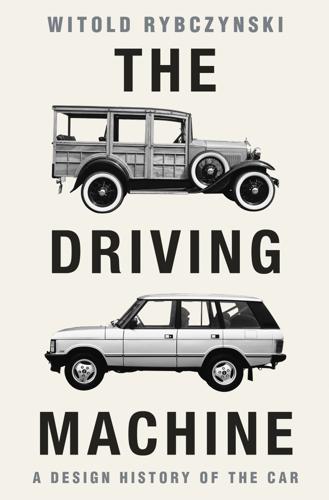
The Driving Machine: A Design History of the Car
by
Witold Rybczynski
Published 8 Oct 2024
A particularly popular model was the two-door Monza coupe, which had bucket seats, automatic transmission, deluxe trim, and special upholstery, and accounted for more than half of Corvair sales. The Monza taught an important lesson: buyers of compact cars were attracted to smaller cars, but they valued the same features as buyers of larger models. By 1965, General Motors had sold 1.6 million Corvairs. That same year, Ralph Nader, a consumer activist, published Unsafe at Any Speed, a critique of the safety record of the American car industry. The best-selling book became a cause célèbre, and led to congressional hearings and the resulting National Traffic and Motor Vehicle Safety Act. Nader’s chapter on the Corvair accused GM of jeopardizing safety to increase profits, and denounced the car as inherently dangerous.v The Corvair did have a tendency to oversteer—that is, to turn more than the amount commanded by the driver.
…
Russell Hayes, The Big Book of Tiny Cars: A Century of Diminutive Automotive Oddities (Beverly, MA: Motorbooks International, 2021). Thomas Hine, Populuxe (New York: Knopf, 1996). John Lukacs, Outgrowing Democracy: A History of the United States in the Twentieth Century (Garden City, NY: Doubleday, 1984). Ralph Nader, Unsafe at Any Speed: The Designed-In Dangers of the American Automobile (New York: Grossman, 1965). L. J. K. Setright, Drive On! A Social History of the Motor Car (London: Granta, 2002). Penny Sparke, A Century of Car Design (Hauppauge, NY: Barron’s, 2002). Gary Witzenburg, “The 10 Most Beautiful Cars according to Leading Automotive Designers,” Car and Driver, updated November 21, 2022.
…
J., on Honda NSX, 166 Shelby, Carroll, 157 Shirley (author’s wife), 137, 168–69, 172, 174, 177, 182–84 shoehorn cars, 117, 122 Siata Daina, 91, 114–15, 134 sideguards, plastic, 177 Silver Arrow, 12n Simca 8, 91 Sinatra, Frank, 95, 112 Skelton, Owen R., 46, 48, 52, 54 SKF, 142 sliding-mesh transmission, 7–8 Sloan, Alfred P., Jr., 83–86, 88, 99, 195 effect on American car design, 88 and GM’s “trading up” concept, 86 Sloan, Alfred P., Jr., (continued) and LaSalle, 85 and “trading up” concept, 83–84 software, Tesla Model S and, 195 Special Car Design Studio (GM), 93 Sperlich, Harold K., 76–77 sports cars; See also specific models in Car and Driver survey of ten most beautiful cars of all time, 202 and motorsport, 142, 145, 146 SportWagon, 75; See also Jeep Cherokee XJ SS Car Company, 148 Stadt des KdF-Wagens, Germany, 20–21 Standard Superior, 17, 32 Starley, John Kemp, 68 starter, electric, 187–88 station wagons; See also specific models hybrid and all-electric, 198–99 minivan’s displacement of, 77n origins, 60–63 steam power, 3–4 “step-down” body (Hudson), 106–7 Stevens, Brooks, 70, 72 Steyr, 10, 15, 19 strut suspension, 139n Studebaker Commander Starliner, 91–93, 92 and 1953 MOMA exhibit, 91 influence on Ford Thunderbird, 94–95 Studebaker Corporation Raymond Loewy and, 89, 90, 92 Zeder/Skelton/Breer engineering trio, 46 Studebaker Starlight coupe, 89–90 Styling Section (GM) and Buick Y-Job, 86–87 and Corvair, 114 and Corvette, 152 origins, 85 Alfred Sloan and, 85–86 Subaru station wagons, 168–69, 169 suburbia, 75, 83, 204 Suez Crisis (1956), 131 suicide doors, 35 SUVs (sport-utility vehicles), 75, 173; See also specific models Svenska Aeroplan AB (Saab), See Saab Swallow Sidecar Company, 148 Système Panhard, 8, 9 tail fins, 93, 97–98 Talbot, 154 talk radio, 82 Targa Florio, 146 Tarpenning, Marc, 193 Tatra xv, 12, 15, 57, 16, 54 Tatra 77, 54–55, 55, 88 Tatra 87, 55 Tatra company, 15 Tatra II, 14, 15 Tatra V570, 15, 16, 16, 19, 27, 54 taxi cabs, electric, 186 Teague, Richard A., 73 Team Porsche, 155 Ten Automobiles (MOMA exhibit), 91 Tesla Model 3, 196–97, 197, 199 Tesla Model S, 87n, 194–96, 195 Tesla Model X, 196 Tesla Model Y, 198, 198–200 Tesla Motors, 192–97 Tesla Roadster, 192–94, 194 Three Days of the Condor (film), 137n three-wheeled cars, 129 Tjaarda, John, 51, 58 Topolino, See Fiat 500 Topolino Toyota Camry (1995), 182 Toyota Land Cruiser, 203 Toyota design studios, 170 Toyota Prius, 2, 190–91, 191 Toyota Prius plug-in, 191 TPV (Très Petite Voiture), 26; See also Citroën 2CV Traction Avant (Front-Wheel Drive), See Citroën 7 “trading up,” 83–84 Tremulis, Alexander S., 101 Triumph Herald, xiii Tucker, Preston T., 99–102 Tucker 48, 101–2, 102 Nash 600 compared to, 105 Tucker Corporation, 99–102 24 Hours of Le Mans, 146, 150, 155 two-stroke engines Bond Minicar, 127 Iso Isetta, 130 Saab 92, 144 Standard Superior, 127 Übelacker, Erich, 54 Uber, 184 Uehara, Shigeru, 166 unibody, 51, 52, 56, 104, 105, 107, 109, 114; See also monocoque Unsafe at Any Speed (Nader), 115–16 US Army jeeps, 64–67 V6 engine, 166 V8 engine Zora Arkus-Duntov’s modification of Ford flathead, 154 V8 engine (continued) Chevrolet small-block, 114, 155 for Chrysler K-310, 90 Ford flathead, 57–58 for Ford Thunderbird, 153 for Ford Tudor, 124 Ford Y-block, 95 for Imperial Crown, 96–97 for LaSalle 303, 84 for Mustang GT Fastback, 157 for Range Rover, 73 for Tatra 77, 54 V12 engine, 56 Vauxhall, 96 VéloSoleX, 137 VGD (Voiture à Grande Diffusion), 29; See also Citroën DS Volkswagen Beetle, xiv, xv author’s first car, 1–3, 203 as basis for Porsche 356, 147 as classic car, 181 features, 1–2 Fiat 500 Topolino compared to, 32–33 KdF-Wagen, 20–21 Nash Metropolitan compared to, 108, 110 prototypes, 13, 19–20 Volkswagen Golf, 77 Volkswagen Microbus, xiii, 78, 79–80, 181 Volkswagen Type 2 Transporter, 78, 78–79 Volvo PV444, 141–43, 143 Volvo PV544, 141–43 VW, See Volkswagen entries Wahlberg, Nils Erik, 104–5 Walker, George W., 156 Walmsley, William, 148 War Assets Administration, 102 Watkins Glen, 154 Watt, James, 3 Weather-Eye (Nash heating system), 105–6, 109 Westinghouse, 189 White, E.
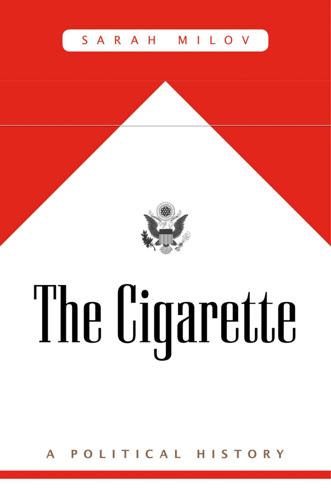
The Cigarette: A Political History
by
Sarah Milov
Published 1 Oct 2019
“A great problem of contemporary life,” Nader wrote in the preface to Unsafe at Any Speed, the book that made him famous, “is how to control the power of economic interests which ignore the harmful effects of their applied science and technology.” Inspired by Rachel Carson’s Silent Spring, Nader’s text was a muckraking indictment of the auto industry’s resistance to installing safety features in cars—resistance that “has brought death, injury and the most inestimable sorrow and deprivation to millions of people.”75 Unsafe at Any Speed may have attracted only a niche audience of insurance adjusters had it not been for a scandal that seemed to validate the author’s assertions of villainy on the part of car makers.
…
Inspired by Rachel Carson’s Silent Spring, Nader’s text was a muckraking indictment of the auto industry’s resistance to installing safety features in cars—resistance that “has brought death, injury and the most inestimable sorrow and deprivation to millions of people.”75 Unsafe at Any Speed may have attracted only a niche audience of insurance adjusters had it not been for a scandal that seemed to validate the author’s assertions of villainy on the part of car makers. In March 1966, Nader claimed that he was investigated and harassed by agents working for General Motors. This allegation triggered a series of events that resulted in the president of GM apologizing to Nader and settling with the thirty-one-year-old for invasion of privacy.76 Unsafe at Any Speed rocketed to the top of the bestseller lists. With money from the settlement, Nader founded the Center for the Study of Responsive Law, which produced a series of colorfully titled monographs in 1970 that hammered home the critique of agency capture: The Interstate Commerce Omission, The Chemical Feast, The Vanishing Air.77 Ralph Nader was far from the only young lawyer energized by the prospects of using litigation in service of environmental and consumer advocacy.
…
Ibid. 73. Ibid. For the New Deal-era precedent, see Panama Refining Co. v. Ryan, 293 US 388 (1935). 74. W. H. Orrick, Department of Justice, June 17, 1964, Lorillard Records, source unknown, UCSF Library, https://www.industrydocumentslibrary.ucsf.edu/tobacco/docs/pfcl0010. 75. Ralph Nader, Unsafe at Any Speed: The Designed-in Dangers of the American Automobile (New York: Grossman Publishers, 1965), ix, iv. 76. “G.M. Apologies for Harassment of Critic,” New York Times, March 23, 1966. 77. Schiller, “Enlarging the Administrative Polity,” 1414. 78. “Conservationists Press Fight against Pesticides,” New York Times, November 26, 1967. 79.

Free to Choose: A Personal Statement
by
Milton Friedman
and
Rose D. Friedman
Published 2 Jan 1980
The question is whether the arrangements that have been recommended or adopted to meet them, to supplement the market, are well devised for that purpose, or whether, as so often happens, the cure may not be worse than the disease. This question is particularly relevant today. A movement launched less than two decades ago by a series of events—the publication of Rachel Carson's Silent Spring, Senator Estes Kefauver's investigation of the drug industry, and Ralph Nader's attack on the General Motors Corvair as "unsafe at any speed"—has led to a major change in both the extent and the character of government involvement in the marketplace—in the name of protecting the consumer. From the Army Corps of Engineers in 1824 to the Interstate Commerce Commission in 1887 to the Federal Railroad Administration in 1966, the agencies established by the federal government to regulate or supervise economic activity varied in scope, importance, and purpose, but almost all dealt with a single industry and had well-defined powers with respect to that industry.
…
That public relations campaign has succeeded so well that we are in the process of turning over to the kind of people who bring us our postal service the far more critical task of producing and distributing energy. Ralph Nader's attack on the Corvair, the most dramatic single episode in the campaign to discredit the products of private industry, exemplifies not only the effectiveness of that campaign but also how misleading it has been. Some ten years after Nader castigated the Corvair as unsafe at any speed, one of the agencies that was set up in response to the subsequent public outcry finally got around to testing the Corvair that started the whole thing. They spent a year and a half comparing the performance of the Corvair with the performance of other comparable vehicles, and they concluded, "The 1960–63 Corvair compared favorably with the other contemporary vehicles used in the tests." 2 Nowadays Corvair fan clubs exist throughout the country.
…
They spent a year and a half comparing the performance of the Corvair with the performance of other comparable vehicles, and they concluded, "The 1960–63 Corvair compared favorably with the other contemporary vehicles used in the tests." 2 Nowadays Corvair fan clubs exist throughout the country. Corvairs have become collectors' items. But to most people, even the well informed, the Corvair is still "unsafe at any speed." The railroad industry and the automobile industry offer an excellent illustration of the difference between a governmentally regulated industry protected from competition and a private industry subjected to the full rigors of competition. Both industries serve the same market and ultimately provide the same service, transportation.

Stuck: How the Privileged and the Propertied Broke the Engine of American Opportunity
by
Yoni Appelbaum
Published 17 Feb 2025
But it was three other books that, by mounting versions of the same critique in different spheres, had a particularly profound effect on the years that followed. Jane Jacobs published The Death and Life of Great American Cities in 1961. The following year brought Rachel Carson’s Silent Spring, a warning on the harms of pesticides. And in 1965, Ralph Nader’s Unsafe at Any Speed showed that automobile manufacturers had failed to take even basic measures to save lives. These three books were rooted in skepticism of America’s relentless pursuit of profit and growth, and in horror at its unaccounted costs. They also helped to crystallize a potent critique of governmental failure, as the legal scholar Paul Sabin has argued.
…
Carson recommended “that machinery be established” to allow the private citizens harmed or inconvenienced by spraying to seek redress. Arm individuals, in other words, with the ability to challenge the decisions government agencies had made in their name. Carson died the following year. But that call was taken up by Nader. Unsafe at Any Speed turned Nader into a cultural icon. He recruited seven law students to investigate the Federal Trade Commission (FTC). The students, dubbed “Nader’s Raiders” by a Washington Post reporter, charged that the agency had been captured by the corporations it was supposed to regulate. When the FTC report produced major reforms, Nader was deluged with applications from hundreds of law students, and set up new teams to investigate a wide array of other governmental agencies.
…
See apartment houses Mumford, Lewis, 31, 266n31 Murray, Henry Anthony, 61 N NAACP, 192, 240 Nader, Ralph, 216 Raiders report on California, 213, 214, 216, 287n214 Unsafe at Any Speed, 210, 211, 212, 286n210 Napa, California, 96, 97 National Historic Preservation Act (1966), 236 National Housing Association, 128 nativism, 83, 84, 124–25 See also immigrants/immigration “neighborhoodism,” 31 neighborhoods affluence of, and zoning ordinances, 220, 221 application of rules across all, in city, 245–46 blockbusting by realtors, 21, 165n21 defining, 30 efficacy of “expressive function” of law, 191 environment as reason to prevent change, 216–18, 287n216 FHA and mixed use, 181–82 historic preservation of, 224–25, 226, 234–35, 236–37 HOLC redlined maps, 179–80, 185 improvement associations, 238–39 mobility as threat to stability and public order in, 33–34, 39 urban renewal and Black-American, 195 See also communities Neighbors Inc., 21, 22 Newburyport, Massachusetts, 68, 69, 270n68 New Deal, 12–13, 178–84, 192, 208 Newsom, Gavin, 110 New York (state) Brooklyn, 93–94 Commission on Building Districts and Restrictions, 123–24 New York City building ordinance for tenements, 104 Commission on the Height, Size and Arrangement of Buildings (Heights of Buildings Commission), 122–24, 135, 136 Fifth Avenue, 120–23, 135, 138 first- or second-generation immigrant population of, 114 first zoning ordinance, 28 land tax proposal, 125–26 Lower East Side, 113–15, 116–17, 131, 132 Moving Day, 7, 71–75, 76–77, 271n73 percent of households renting (1890), 75 percent of Manhattan lots receiving historic designation, 238 population growth, 124 West Village, 24–27, 25, 27, 29–31, 33, 36 World War I and housing in, 76–77 Zoning Commission, 125–26 zoning ordinance overhaul to limit housing units, 246–47 zoning ordinances and existing buildings in Manhattan, 220 zoning ordinances and population of Manhattan, 136 See also West Village The New Yorker, 36 Nichols, Bill, 101 NIMBYism, 22–23 Nixon, Richard, 216 Nolen, John, 173–75 Northwest Ordinance (1787), 53–55, 58, 62 nuisance regulations, 188, 241 O occupancy agreements, 238–39 occupational licensing, 12 Odd Fellows, 79 Ogden, William, 191 Ohio, 54–57, 69, 145–54, 268n56 Olmsted, Frederick Law, 162 Omaha, 272n74 Other America (Harrington), 210 P Pacific Railroad Acts, 62 Pappas, Thomas N., 207 Parolek, Daniel, 241–42 participatory planning, 220, 221, 222–23 Patterson, William B., 129 Paul, Mark, 242 Pease, Fred, 146–47, 279n146 Peck, John, 61 Phillips, Shane, 242 Pilgrims, 38–39 planter class cost of runaway slaves to, 162 domination by, in colonial Virginia, 50, 51, 268n51 movement west of, 161 in post-Civil War south, 164–65 pluralism and geographic mobility, 9, 10, 84 police powers Black workers’ mobility in post-Civil War South and, 164 common law basis of, 92 elasticity of, 105 to enforce class distinctions, 153 Euclid v.

Road to Nowhere: What Silicon Valley Gets Wrong About the Future of Transportation
by
Paris Marx
Published 4 Jul 2022
While Jacobs’s campaign in New York City was successful, most of the highways proposed elsewhere in the United States were built as planned. Around the same time as people were trying to stifle highway projects, Ralph Nader was also gaining attention as a consumer advocate with a focus on the automobile. In his 1965 book Unsafe at Any Speed, Nader exposed the automotive industry’s disregard for safety, which included ignoring clear safety hazards, investing more in vehicle styling than safety features, and efforts to blame drivers for harms that could have been avoided through better practices on the part of the automakers. Nader’s book, paired with the escalating number of road deaths in the 1960s, finally forced the federal and state governments to address the automotive safety crisis.
…
on carrier bag theory of fiction, 206–7 on Omelas, 226–7 on technology and hi tech, 224–5 Very Far Away from Anywhere Else, 202 Levandowski, Anthony, 120–2 Levinson, Herbert, 12 Levitz, Eric, 181, 182–3 Light, Jennifer, 56–7 Lime, 168–9 lithium, 75–6, 78, 79, 80, 81, 226 Loop (Boring Company), 146–51 Los Angeles, CA auto dominance in, 212 Bird in, 169 freeway plan, 22 housing prices in, 212–3 Interstate Highway System in, 140–1 jitneys in, 89–91 ride-hailing services in, 99 Louisville, Kentucky, Bird in, 169 Lower Manhattan Expressway, 26 Lutz, Bob, 70 Lycos, 55 Lyft, 99–100, 101, 104–5, 111, 168–9, 191, 229 Maersk, 49, 129 Marble, 172, 173 Massachusetts Institute of Technology (MIT), 39 Maughan, Tim, 48, 49–50, 222–3 Infinite Detail, 129 Mazzucato, Mariana, 55 Measure M, 212 Mercedes-Benz, 78 micromobility services, 166–7, 169–70, 171–2, 177–9 Microsoft, 52, 72 military networks, 50 military spending, 38–9, 45–6, 119–20 mining industry about, 72–7, 79 in Australia, 75–6, 80 domestic supplies of minerals, 80–1 mobility, disruption of, by automobiles, 9–35 Model Lab, 230 Monbiot, George, 221–2 Morales, Evo, 76 Morozov, Evgeny, 59 mortgage insurance, 28–9 Moses, Robert, 26, 46 Mosseri, Adam, 61–2 motor vehicle tax, for funding highways, 25 motorways. See Interstate Highway System mouse, 54–5 Musk, Elon, 5–6, 55, 63–4, 70, 73, 76, 116, 123, 128, 137, 138, 143–51, 153, 157, 158, 186, 188, 190, 219 Muzaffar, Saadia, 228–9 Nader, Ralph, 137, 232 Unsafe at Any Speed, 27–8 National Association for the Advancement of Colored People (NAACP), 112 National Association of City Transportation Officials, 175 National City Lines, 21 National High-Performance Computer Technology Act (1989), 51 National Highway Traffic Safety Administration (NHTSA), 137 National Science Foundation (NSF), 50–1 National Traffic and Motor Vehicle Safety Act (1966), 27–8 National Transportation Safety Board (NTSB), 134–6 Navlab autonomous vehicles, 119–20 NBCUniversal, 216 Nelson, Laura, 147 network technologies, 50 Neumann, Adam, 183 New Communalists, 41, 43 New Deal, 28, 46 New Democrats, 50 New Left, 41, 43 New Right, 53 New York City, NY bike lanes in, 171 bus system in, 215 ride-hailing services in, 99 taxi services in, 104 Uber in, 98–9, 103 New York Transportation Company, 66 Ng, Andrew, 126 Nissan, 116 Nixon, Richard, 47–8, 203 North America, train system in, 218–9.
…
See bicycles Seattle, WA, ride-hailing services in, 99 Securities and Exchange Commission (SEC), 138 Sedran, Thomas, 129–30 self-checkout, 194–5 self-driving cars accidents with, 132–5 Autonomous Land Vehicle project, 119 Brin on, 114–5 challenges of, 126, 129–30 environmental dilemmas and, 131–2 Google, 6 Intermodal Surface Transportation Efficiency Act (1991), 119 Kalanick on, 116 Navlab autonomous vehicles, 119–20 Ng on, 126 pedestrians and, 127 pricing of, 127–8 pulp science fiction and, 118 Radio Corporation of America (RCA) and, 118 software for, 122–3 speed and, 123–4 Tesla’s Autopilot system, 137–8 Tsukuba Mechanical, 119 VaMoRs, 119 Sepulveda Pass, 141 Shanghai Gigafactory (Tesla), 83 Sheffield, UK, docked bikeshare system in, 170–1 Sheller, Mimi, 158, 207 Shell Oil City of Tomorrow, 2 Shill, Gregory, 30 shipping industry, 49 shut-in economy, 196–7 Sidewalk Labs, 228–30 Silicon Valley, 37–8, 44–5 skates (platforms), 146–7 Skyports, 154–5 Small Business Investment Company, 55 smart homes, 60–1 smartphone apps, 55, 181, 194–5 Smiley, Lauren, 196 Social Bicycles (SoBi), 167–8 Socialist Left Party, 209 social media, 61–2 SolarCity, 55, 143, 188 solar panels, Musk on, 188–9 Southern State Parkway, 26 Soviet Union, 39 space program, 48 SpaceX, 55, 144, 148, 150–1 speed limiter referendum, 19–20 speed limits, 18–20 Sputnik I satellite, 39, 45 standardized containers, increasing use of, 49 Standard Oil of California, 21 Stanford Industrial Park, 40 Stanford Research Institute, 54–5 Stanford University, 39–40, 55, 120 Stark, Tony, 70 Starley, John Kemp, 160, 162 Starship Technologies, 172, 173–5, 176–7 Stop de Kindermoord, 205 streetcars, 12–3, 15, 21, 92, 160 “subscriber city,” 197 suburbanization, 23 suburbs, 12–3 superhighway plan (Detroit), 22 supply chains, 50 Surface Transportation Policy Project, 141 surge pricing, for ride-hailing services, 100 Swisher, Kara, 116–7 Taft-Hartley (1947), 112 taxi medallions, 104–5 taxi services about, 95–6, 101–2, 104–5 industry regulation and, 107, 110–1, 185 Taylor, Isaac, 122 TCP/IP protocol, 50 TechGirls Canada, 228–9 tech industry development of, 9–10 growth of, 4, 180–5 speed of technological innovation, 48 technological solutionism, 59 Tesla, 5–6, 55, 63–4, 70, 72, 73, 82–4, 85–6, 116, 137–8, 143, 147, 158–9, 188, 189, 190 Tesla, Nikola, 70 Texas, Interstate Highway System in, 140 Thacker Pass, NV, 79, 226 Thiel, Peter, 46–7 Thrun, Sebastian, 121 Toronto, Canada, 228–30 Toyota, 116, 121, 122 train system in France, 220 in North America, 218–9 transportation bus system, 21, 215, 219 computerized planning systems for, 130 flying cars, 151–2, 159 history of, 7 jitneys, 89–91, 92, 108–9 Navlab autonomous vehicles, 119–20 present-day dominance of, 34–5 taxi services, 95–6, 101–2, 104–5, 107, 110–1, 185 three-dimensional vs. two-dimensional, 145 train system, 218–9, 220 tunnels for, 144–51, 154–5, 158–9, 189 vertical takeoff and landing vehicle (VTOL/eVTOL), 152–5, 157, 158 walking as primary means of, 12 Trudeau, Justin, 79–80, 228 Trump, Donald, 78 Tsukuba Mechanical, 119 tunnels, for transportation, 144–51, 154–5, 158–9, 189 Turner, Fred, 41, 43, 52 Turner, Matthew, 141–2 Uber about, 115 acquisition of Jump, 166–8 Advanced Technologies Group (ATG), 133, 134–5 benefits of, 94 campaigns for, 103 changed from Ford Fusion to Volvo XC90 SUVs, 134–5 compared with taxi services, 95–6 core business of, 93 costs for, 107–8 Covid-19 and, 108 customer base for, 100–1 divisions of, 153–4, 184 driver pay for, 103–4, 107 effect on traffic of, 100 employee classification for, 111–2 founding of, 181 Greyball and, 110 growth of, 97, 105–6 industry regulation and, 101–2, 107, 110–1, 112–3, 156, 174, 185 loss of money by, 106–7, 184–5 marketing by, 158–9 media representation of, 94–5 micromobility services of, 166–9 model of, 102–3 in New York City, 98–9 origins of, 92–3, 109 pricing for, 184 promises made by, 186 pulls out of China, 152 refocus on ride-hailing and food delivery services, 184–5 safety record of, 134, 135–6 in San Francisco, 97–8 walking vs., 191 Uber Air, 153–4, 155, 157, 159 Uber Copter, 155–6 Uber Eats, 184–5 Uber Elevate, 152, 154, 159 unemployment rate, 95–6 unions, for taxi drivers, 101–2 United Kingdom (UK) docked bikeshare system in, 170–1 ecommerce in, 193 University of Technology Sydney, 75 University Paris-East, 169–70 Unsafe at Any Speed (Nader), 27–8 Untokening collective, 218 Urban Challenge, 120 urban renewal strategy, 26 Urry, John, 32–3, 143 US Air Force, 50 US Department of Defense, 50 US-Japan Semiconductor Trade Agreement (1986), 45 US National Labor Relations Act, 102 VaMoRs, 119 Vansintjan, Aaron, 222 Vasquez, Rafaela, 132, 135 Vélib’ bikeshare system, 210 venture capitalists, 186–7, 199 vertical takeoff and landing vehicle (VTOL/eVTOL), 152–5, 157, 158 Very Far Away from Anywhere Else (Le Guin), 202 Vietnam War, 39, 40, 43, 49 VoiceOver, 175 Volkswagen, 77, 78, 129–30 Volocopter, 152 Volvo XC90 SUVs, 134–5 Walker, Jarrett, 59, 142–3, 181–2 walking, as means of transportation, 12, 191 Washington, DC, ride-hailing services in, 99 Waterfront Toronto, 228–9, 230, 231 Waymo, 133, 138, 186 web 2.0, 57 WeWork, 181, 182–3 white people, mortgages and, 29 Who Killed the Electric Car?
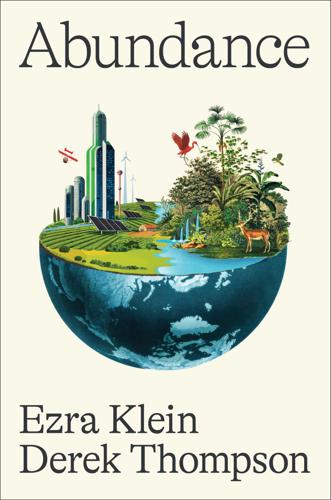
Abundance
by
Ezra Klein
and
Derek Thompson
Published 18 Mar 2025
But it wasn’t just conservatives who came to think the government reckless and dangerous and in need of new rules and strictures. Liberals did, too. After World War II, as highway construction grew, vehicle sales soared. So did road deaths. Motor vehicle fatalities rose from about 30,000 in 1946 to more than 50,000 in the late 1960s. In 1965, a lawyer named Ralph Nader published the book Unsafe at Any Speed, a blistering exposé of car manufacturers resisting safety improvements while blaming individual drivers for rising fatalities. The book was a sensation. In 1966, Lyndon Johnson signed the National Traffic and Motor Vehicle Safety Act and the Highway Safety Act, which mandated a new set of auto safety standards.69 Nader soon became one of the most famous lawyers in America.
…
Construction Sector” (Goolsbee and Syverson), 78–80 Stripe, 86, 193 STV, 118 Sunak, Rishi, 61 Sun Microsystems, 163 supply-side economics housing shortage and, 38–43, 212 (see also housing) as mistake, 5–11 Republican Party associated with, 6 supply and demand, defined, 5–6 sustainability of energy, 62–67; see also energy Syverson, Chad, 78–80, 84 Tahanan, 101–4, 106 Taiwan, semiconductor chips manufacturing in, 26, 116 Tanenbaum, Morris, 165 taxes child tax-credit payments, 122 degrowth proposals, 60 housing and, 44–47, 107–10 Taylor, Bob, 162 Tea Party, 33 technology; see also energy cities and innovation of, 25–30 politics of invention and, 133–37 (see also invention) progress and importance of, 222 railroad history of United States, 74 silicon transistor invention, 165 (see also semiconductor chips) tennessine, 144 Terner Center for Housing Innovation (University of California, Berkeley), 101–2 Tesla, Nikola, 171 Tesla (automotive company), 26, 27, 29–30, 136 Texas housing in, 33, 39 solar power in, 64 “The Homeownership Society Was a Mistake” (Demsas), 46 Thiel, Peter, 136, 159 thirty-year fixed-rate mortgage, 44–45 “This Land” (San Francisco Chronicle column, Gilliam), 56 Thompson, Stuart A., 184 “ticky-tacky” term, 55 “A Time for Triage” (Gerrard), 113 Time magazine, 55 Tocqueville, Alexis de, 92 Tong, Yasmin, 108–9 Topol, Eric, 143 trade; see also semiconductor chips China and, 206 Trump on, 209–10 Transcontinental Railroad, 74 Transit Costs Project, 77 Trans-Pacific Partnership, 210 transportation abundance potential for, 1–4 California on gas-powered vehicles, 14 California’s high-speed rail difficulty and, 71–78, 86, 94, 116–18 cars, construction productivity measure, 85 Federal-Aid Highway Act (1968, 1973), 51 Federal Highway Administration, 125 Highway Safety Act (1966), 86 housing and, 35–38, 48–56 implementation of inventions for, 176, 180 Interstate Highway System, 46–47, 50, 51, 54–56, 96, 97, 204 Unsafe at Any Speed (Nader), 86–90 Triumph of the City (Glaeser), 24, 25, 27, 30 Truman, Harry, 22, 205 Trump, Donald on COVID pandemic, 188, 189 on economic policy, 10 election of (2024), 17–18, 211 on immigration, 98, 208 on infrastructure, 209–10 populist movement and, 207 second term and abundance potential of, 213 on trade, 209 Türeci, Özlem, 139 TYLin, 118 Uniform Relocation Assistance and Real Property Acquisition Policies Act (1970), 51 unions, 82, 126, 127 United Kingdom carbon emissions per person, 66 health care cost in, 105 post–World War II economy, 81 United States; see also Democratic Party; political issues; Republican Party; individual names of government agencies; individual names of politicians carbon emissions per person, 66 federal civilian workforce size in, 117 health care cost in, 105 (see also health care) housing supply in, vs. other developed countries, 23 (see also housing) University of California, Berkeley, 102 University of California, Los Angeles (UCLA), 69, 162, 163 University of Chicago, 147, 157, 189 University of Pennsylvania, 130, 137 University of Texas, 173 University of Wisconsin, 178 Unsafe at Any Speed (Nader), 86–90 UPS, 187 vaccine, COVID, 130–32, 135, 137–40, 146, 156, 161 values, abundance and, 15, 49, 83, 205, 207–11, 216 Vance, JD, 208 Vanderbilt University, 69 Vanguard 1 satellite, 178 Van Slyke, Cassius, 152 Vartabedian, Ralph, 118 Venice (California) Dell Community project, 110 Vernon, Austin, 67 Veterans Administration, US, 186 Virginia, construction productivity in, 80 Voeten, Erik, 61 Volta, Alessandro, 176 Von Eschenbach, Andrew, 142 Walgreens, 187 Wallace-Wells, David, 193 Wall Street Journal, 163, 189 Walmart, 29 Walz, Tim, 93 “War on Cancer,” 142 War Production Board, 175 Warp Speed (Mango), 185, 186–87 Warren, Earl, 92 Washington Post, 127 Washington (state), energy sources of, 69 water desalination, 67, 198 water pollution Clean Water Act (1972), 51, 87, 96 examples of, 50, 96 Watney, Caleb, 187 Webb, James, 201 Weissman, Drew, 137–40 Western Electric, 163 Westinghouse, 218 Wharton School, 79–80 “What Happens When the New Green Deal Meets the Old Green Laws?”
…
Construction Sector” (Goolsbee and Syverson), 78–80 Stripe, 86, 193 STV, 118 Sunak, Rishi, 61 Sun Microsystems, 163 supply-side economics housing shortage and, 38–43, 212 (see also housing) as mistake, 5–11 Republican Party associated with, 6 supply and demand, defined, 5–6 sustainability of energy, 62–67; see also energy Syverson, Chad, 78–80, 84 Tahanan, 101–4, 106 Taiwan, semiconductor chips manufacturing in, 26, 116 Tanenbaum, Morris, 165 taxes child tax-credit payments, 122 degrowth proposals, 60 housing and, 44–47, 107–10 Taylor, Bob, 162 Tea Party, 33 technology; see also energy cities and innovation of, 25–30 politics of invention and, 133–37 (see also invention) progress and importance of, 222 railroad history of United States, 74 silicon transistor invention, 165 (see also semiconductor chips) tennessine, 144 Terner Center for Housing Innovation (University of California, Berkeley), 101–2 Tesla, Nikola, 171 Tesla (automotive company), 26, 27, 29–30, 136 Texas housing in, 33, 39 solar power in, 64 “The Homeownership Society Was a Mistake” (Demsas), 46 Thiel, Peter, 136, 159 thirty-year fixed-rate mortgage, 44–45 “This Land” (San Francisco Chronicle column, Gilliam), 56 Thompson, Stuart A., 184 “ticky-tacky” term, 55 “A Time for Triage” (Gerrard), 113 Time magazine, 55 Tocqueville, Alexis de, 92 Tong, Yasmin, 108–9 Topol, Eric, 143 trade; see also semiconductor chips China and, 206 Trump on, 209–10 Transcontinental Railroad, 74 Transit Costs Project, 77 Trans-Pacific Partnership, 210 transportation abundance potential for, 1–4 California on gas-powered vehicles, 14 California’s high-speed rail difficulty and, 71–78, 86, 94, 116–18 cars, construction productivity measure, 85 Federal-Aid Highway Act (1968, 1973), 51 Federal Highway Administration, 125 Highway Safety Act (1966), 86 housing and, 35–38, 48–56 implementation of inventions for, 176, 180 Interstate Highway System, 46–47, 50, 51, 54–56, 96, 97, 204 Unsafe at Any Speed (Nader), 86–90 Triumph of the City (Glaeser), 24, 25, 27, 30 Truman, Harry, 22, 205 Trump, Donald on COVID pandemic, 188, 189 on economic policy, 10 election of (2024), 17–18, 211 on immigration, 98, 208 on infrastructure, 209–10 populist movement and, 207 second term and abundance potential of, 213 on trade, 209 Türeci, Özlem, 139 TYLin, 118 Uniform Relocation Assistance and Real Property Acquisition Policies Act (1970), 51 unions, 82, 126, 127 United Kingdom carbon emissions per person, 66 health care cost in, 105 post–World War II economy, 81 United States; see also Democratic Party; political issues; Republican Party; individual names of government agencies; individual names of politicians carbon emissions per person, 66 federal civilian workforce size in, 117 health care cost in, 105 (see also health care) housing supply in, vs. other developed countries, 23 (see also housing) University of California, Berkeley, 102 University of California, Los Angeles (UCLA), 69, 162, 163 University of Chicago, 147, 157, 189 University of Pennsylvania, 130, 137 University of Texas, 173 University of Wisconsin, 178 Unsafe at Any Speed (Nader), 86–90 UPS, 187 vaccine, COVID, 130–32, 135, 137–40, 146, 156, 161 values, abundance and, 15, 49, 83, 205, 207–11, 216 Vance, JD, 208 Vanderbilt University, 69 Vanguard 1 satellite, 178 Van Slyke, Cassius, 152 Vartabedian, Ralph, 118 Venice (California) Dell Community project, 110 Vernon, Austin, 67 Veterans Administration, US, 186 Virginia, construction productivity in, 80 Voeten, Erik, 61 Volta, Alessandro, 176 Von Eschenbach, Andrew, 142 Walgreens, 187 Wallace-Wells, David, 193 Wall Street Journal, 163, 189 Walmart, 29 Walz, Tim, 93 “War on Cancer,” 142 War Production Board, 175 Warp Speed (Mango), 185, 186–87 Warren, Earl, 92 Washington Post, 127 Washington (state), energy sources of, 69 water desalination, 67, 198 water pollution Clean Water Act (1972), 51, 87, 96 examples of, 50, 96 Watney, Caleb, 187 Webb, James, 201 Weissman, Drew, 137–40 Western Electric, 163 Westinghouse, 218 Wharton School, 79–80 “What Happens When the New Green Deal Meets the Old Green Laws?”

Click Here to Kill Everybody: Security and Survival in a Hyper-Connected World
by
Bruce Schneier
Published 3 Sep 2018
Trump (11 May 2017), “Presidential executive order on strengthening the cybersecurity of federal networks and critical infrastructure,” Office of the President of the United States, https://www.whitehouse.gov/presidential-actions/presidential-executive-order-strengthening-cybersecurity-federal-networks-critical-infrastructure. 181No agency has yet followed that policy: Nick Marinos (13 Feb 2018), “Critical infrastructure protection: Additional actions are essential for assessing cybersecurity framework adoption,” GAO-18-211, US Government Accountability Office, https://www.gao.gov/assets/700/690112.pdf. 181The rest of the report has been ignored: You could blame it on the dysfunctional administration, but I don’t believe it would have fared much better in a different administration. 182Some observers have noted parallels: Economist (8 Apr 2017), “How to manage the computer-security threat,” https://www.economist.com/news/leaders/21720279-incentives-software-firms-take-security-seriously-are-too-weak-how-manage. 182It was the 1965 publication of: Christopher Jensen (26 Nov 2015), “50 years ago, Unsafe at Any Speed shook the auto world,” New York Times, https://www.nytimes.com/2015/11/27/automobiles/50-years-ago-unsafe-at-any-speed-shook-the-auto-world.html. 184The GDPR—General Data Protection Regulation: European Union (27 Apr 2016), “Regulation (EU) 2016/679 of the European Parliament and of the Council of 27 April 2016 on the protection of natural persons with regard to the processing of personal data and on the free movement of such data, and repealing Directive 95/46/EC (General Data Protection Regulation),” Official Journal of the European Union, http://eur-lex.europa.eu/eli/reg/2016/679/oj. 184For example, the GDPR mandates that: This is a good short summary: Cennydd Bowles (12 Jan 2018), “A techie’s rough guide to GDPR,” https://www.cennydd.com/writing/a-techies-rough-guide-to-gdpr. 184The GDPR’s regulations only affect: Mark Scott and Laurens Cerulus (31 Jan 2018), “Europe’s new data protection rules export privacy standards worldwide,” Politico, https://www.politico.eu/article/europe-data-protection-privacy-standards-gdpr-general-protection-data-regulation. 185If companies have to explain: This is already happening.
…
What would such an event look like? That depends on the time frame. Some observers have noted parallels between today’s Internet+ and the pre-1970s automobile industry. Free from regulation, manufacturers were building and selling unsafe cars, and people were dying. It was the 1965 publication of Ralph Nader’s Unsafe at Any Speed that spurred the government into action, resulting in a slew of safety laws covering seat belts, headrests, and so on. A slew of Internet+ related fatalities could cause a similar regulatory flurry. On the other hand, companies have been killing people via the environment for decades. Rachel Carson published Silent Spring in 1962, before the EPA was formed in 1970—and almost 50 years later, the EPA’s regulations are still insufficient to combat the threats.
…
, 136 Electronic Privacy Information Center, 223 e-mail, 153 encryption, 109, 114, 169, 170–72 bypassing, 171, 193 by default, 197 end-to-end, 167, 170–71, 175 limiting, 197–99 as munition, 197 ubiquitous, 171–72, 199 warrant-proof, 194–95 end-to-end principle, 119 end users, 23, 130 Enron, 127, 128 EPA, formation of, 183 Equifax, 37, 79, 106, 124, 125, 128, 130, 180, 187 espionage: cyberespionage and cyberattack, 72, 81 international, 66–68, 71, 171–72 Estonia, national ID card of, 31, 48 ETERNALBLUE, 164–65 EU, regulations in, 184–88 European Safety and Security Engineering Agency, 149 Evans, Lord John, 196 FAA: database of near misses, 177 jurisdiction of, 145–46 Facebook, 190 censorship by, 60 controls exerted by, 61, 62 and EU regulation, 185, 186 identification systems in, 199 surveillance via, 57, 58, 169, 196 Fair Credit Billing Act (1974), 100 Fancy Bear (Russian intelligence unit), 46 Farook, Syed Rizwan, 174 FBI: backdoors demanded by, 172, 174, 193–97, 198, 220 and hacking back, 204 IMSI-catchers used by, 168–70 and law enforcement, 173–76 Microsoft vs., 190 wiretapping by, 168 FDA, 137, 145, 151 Federal Communications Commission (FCC), 149 FedRAMP, 123 Felten, Ed, 223 financial crisis (2008), 125–26 FinFisher, 64–65 FireEye, 42 flash crash, 85 Ford Foundation, 224 Fort Hood shooting (2009), 202 Freeh, Louis, 193 FTC, 148, 154 Gamma Group, 30, 65 Gartner tech analyst firm, 101 GDPR (General Data Protection Regulation) [EU], 151, 184–88 Geer, Dan, 163, 217 George, Richard, 170 Gerasimov Doctrine, 71 Germany, BSI and BND in, 173 GGE (Group of Governmental Experts), UN, 158 Gmail, 153 Goldsmith, Jack, 163 Google: Advanced Protection Program, 47 censorship by, 60 controls exerted by, 61, 62 and EU regulations, 185 identification systems in, 199 lobbying by, 154 state investigation of, 187 surveillance via, 58–59, 169, 196 governments, 144–59 asymmetry between, 91–92 censorship by, 60 and defense over offense, 160–79 functions of, 10 and industry, 176–79 information sharing by, 176 and infrastructure, 117 insecurity favored by, 57 international cooperation, 156–59 international espionage, 171–72 jurisdictional arbitrage, 156 and liability law, 128–33 lobbying of, 154–55 mistrust of, 208, 220 policy challenges in, 99, 100–101, 192–206 regulatory bodies, 121, 144, 150–52, 156–59, 192 and security standards, 167 supply-chain attacks on, 87–89 surveillance by, 64–68, 172, 195, 208 vulnerability disclosure by, 163 Greer, John, 126 GTT Communications, 115 Gutenberg, Johannes, 24 hacking: catastrophic, 9, 16, 217 class breaks, 33, 95 contests in, 85 costs of, 102–3 cyberweapons in, 73 increasing threat of, 79 international havens of, 156 through fish tank, 29 hacking back, 203–4 HackingTeam, 30, 45, 65 HAMAS, 93 Hancock Health, 74 harm, legal definition of, 130 Harris Corporation, 168 Hathaway, Melissa, 114 Hayden, Michael, 170 Healey, Jason, 158, 160 Heartbleed, 21, 114–15 Hello Barbie (doll), 106 Hilton Hotels, 185 Hizballah, 93 Honan, Mat, 29 Hotmail, 153 HP printers, 62 Huawai (Chinese company), 87 Human Rights Watch, 223 humans, as system component, 7 IBM, 33 iCloud, 7 hacking of, 78 and privacy, 190 quality standards for, 111, 123, 135 Idaho National Laboratory, 79, 90 identification, 51–55, 199–200 attribution, 52–55 breeder documents for, 51 impersonation of, 51, 75 identity, 44 identity theft, 50–51, 74–76, 106, 171 Ilves, Toomas Hendrik, 221 iMessage, 170 impersonation, 51, 75 IMSI (international mobile subscriber identity), 168–70 industry lobbying groups, 183 information asymmetries, 133–38 information security, 78 infrastructure: critical, use of term, 116 security of, 116–18 Inglis, Chris, 28 innovation, 155 insecurity, 56–77 cost of, 126 criminals’ benefit from, 74–77 and cyberwar, 68–74 insurance industry, 132–33 integrity, attacks on, 78–82 intellectual property theft, 66, 72–73, 75 interconnections, vulnerabilities in, 28–30, 90 International Organization for Standardization (ISO), 140 Internet: advertising model of, 57, 60 changing concepts of, 5, 218 connectivity of, 5, 91, 105–6 demilitarization of, 212–15 dependence on, 89–90 development phase of, 22–23, 157 explosive growth of, 5, 146 global, 7, 16, 161 governance model of, 157 government regulation of, 152–55 horizontal growth of, 146 industry standards for, 23, 122–23 lack of encryption on, 170–72 maintenance and upkeep of, 143 nonlinear system of, 211 private ownership of infrastructure, 126 resilience of, 210–12 as social equalizer, 214, 217 surveillance and control via, 64–68 viral dissident content on, 158 Internet+: authentication in, 49–51 coining of term, 8 cybersecurity safety board for, 177 risks and dangers of, 217–18 simultaneous vulnerabilities in, 94 Internet+ security: closing the skills gap, 141–42 correcting information asymmetries in, 133–38 correcting misaligned incentives in, 124–28 current state of, 9 defense in, see attack vs. defense enforcement of, 121 funding maintenance and upkeep in, 143 incentives and policy solutions for, 100–103, 120–43 increasing research in, 142–43 liabilities clarified for, 128–33 litigation for, 121 meanings of, 15–17 and privacy, 9 public education about, 138–41 public policies for, 120–21 standards for, 122–23, 140–41, 157–59 as wicked problem, 11, 99 Internet Engineering Task Force (IETF), 23, 167 Internet of Things (IoT), 5 as computerization of everything, 7 Cybersecurity Improvement Act, 180 in developmental stage, 8 patching of, 37–38 smartphone as controller hub for, 48 Internet Policy Research Initiative, MIT, 224 Investigatory Powers Act (UK), 195 iPhones, 3–4 encryption on, 174, 197 new versions of, 42–43 IPsec, 167 Iran: cyberattack by, 71, 116, 178 hackers in, 45 Stuxnet attack on, 79 Iraq, 212 ISIS, 69, 93 ISPs: connections via, 113–14 Tier 1 type, 115 ISS World (“Wiretappers’ Ball”), 65 jobs, in cybersecurity, 141–42 John Deere, 59–60, 62, 63 Joyce, Rob, 45, 53, 54, 164, 166 Kaplan, Fred, 73 Kaspersky Lab, 29, 74, 87 Kello, Lucas, 71 Kelly, John, 66 Keurig coffee makers, 62 key escrow, 194 KICTANet, Kenya, 214 labeling requirements, 134–35 LabMD, unfair practices of, 130–31 Landau, Susan, 175, 176, 223 Las Vegas shooting (2017), 202 Ledgett, Rick, 163–64, 166 lemons market, 134 Lenovo, 187 letters of marque, 204 Level 3 ISP, 115 liability law, 125, 128–33 Liars and Outliers (Schneier), 101, 209 Library of Congress, 42 license plate scanners, 201 linear systems, 210 Lloyd’s of London, 90 Lynn, William, 198 machine learning, 7, 82–87 adversarial, 84 algorithms beyond human comprehension, 111–12 autonomous, 82–83, 85 Maersk, 71, 94 malware, 26, 30, 196 man-in-the-middle attacks, 49, 169 market economics, and competition, 6 mass shootings, 202 May, Theresa, 197 McConnell, Mike, 198 McVeigh, Timothy, 202 medical devices: bugs in, 41 and government regulations, 151 hacking, 16 and privacy, 151 Meltdown vulnerability, 21 Merkel, Angela, 66 metadata, 174 Microsoft, 57, 190 Microsoft Office, new versions of, 42, 43 military systems, autonomous, 86 Minecraft video game, 94 miniaturization, 7 Mirai botnet, 29, 37, 77, 94, 130 money laundering, 183 monocultures, vulnerabilities in, 31 Moonlight Maze, 66 “movie-plot threats,” 96 Mozilla, 163 Munich Security Conference, 70 My Friend Cayla (doll), 106 Nader, Ralph, Unsafe at Any Speed, 182 National Cyber Office (NCO), 146–50 National Cyber Security Centre (UK), 173 National Cybersecurity Safety Board (proposed), 177 National Institute of Standards and Technology (NIST), Cybersecurity Framework of, 123, 147 National Intelligence Council, 211–12 National Science Foundation (NSF), 147 National Security Council, 163 National Security Strategy, 117 National Transportation Safety Board, 177 Netflix, 148 net neutrality, 61, 119 network effect, 60 networks: “air gapped,” 118 collective action required of, 23–24 end-to-end model of, 23 firewalls for, 102 iCloud, 111 secure connections in, 113–14, 125 and spam, 100 telephone, 119 New America, 223 New York Cyber Task Force, 213 NOBUS (nobody but us), 164–65, 169, 170 norms, 157–59 North Korea: cyberattack by, 71 cybercrimes by, 76, 157 hacking by, 54, 71, 78 threats by, 70, 72 Norwegian Consumer Council, 105–6 NotPetya malware, 71, 77, 89, 94 NSA: attribution in, 53–55 BULLRUN program, 167–68 credential stealing by, 45 cyberattack tools of, 165–67 on cybersecurity, 86 cyberweapons stolen from, 73 disclosing and fixing vulnerabilities, 162–67 encryption circumvented by, 171, 193 intelligence-gathering hacks by, 116, 118 missions of, 160–61, 172 mistrust of, 208 reorganization (2016) in, 173 and security standards, 167–70 splitting into three organizations, 172–73 supply-chain attacks by, 87 surveillance by, 65, 66–67, 190, 202 NSO Group, 65 Nye, Joseph, 157 Obama, Barack, 66, 69, 92, 117, 163, 180, 208 Ochoa, Higinio O.
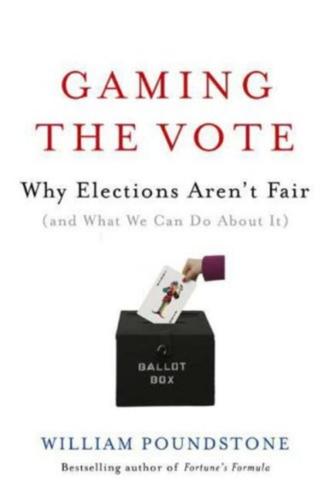
Gaming the Vote: Why Elections Aren't Fair (And What We Can Do About It)
by
William Poundstone
Published 5 Feb 2008
82 A Short History of Vote Splitting "Because we want to punish the Democrats, we want to hurt them, wound them." Milleron's remarks would have been no surprise to those who followed Nader's career closely. Not many voters did. Nader came to public attention in 1965 with the publication of a bestselling book, Unsafe at Any Speed. In it, he attacked the automobile industry for putting profits above customer safety. The title was intended literally. Nader told of a boy who had gored himself on a Cadillac tail fin and died. It was a parked car. Nader was soon testifying regularly before Congress. He became such a popular figure that, in 1968, Democratic presidential hopeful George McGovern asked him to be his running mate.
…
There have been 45 presidential elections since 1828. In at least five, the race went to the second most popular candidate because of a spoiler. That's over an II percent rate of catastrophic failure. Were the plurality vote a car or an airliner, it would be recognized for what it isa defective consumer product, unsafe at any speed . . , FOUR The Most Evil Man in America In the past few election cycles, the spoiler effect has taken on un- precedented strategic importance. It is best to begin by saying something of the profession responsible for that. Political consultants are an American invention. At least until recently, other nations with long democratic traditions did not have professional campaign runners.
…
Looking Glass (Carroll), 153 Tilden, Samuel, 95 Tillotson, Mal)', 104 Tocqueville, Alexis de, 163 Todhunter, Isaac, 141 Touchstone, David, 15 Treen, David, 5, 8, 9,16 Truman, Harry S" 43, 44,180 Trump, Donald, /61 Turnipseed, Tom, 98--99,105 Tweed, William Marcy "Boss," 181, 182 Twenty.l1r<;tAmendment, 28 United Nations, [99,282 Unsafe at Any Speed (Nader), 83 utilitarian voting, 251-58 Value and Capital (Hicks), 38 Van Bureo, Martin, 62, 63, 63 Van Newenhizen, Jill, 203-204, 207, 208, 210,242-43 Venice, 198-99,282 Ventura, Jesse, 127, 213 Vermont, 63 Vidal, Gore, 83 Vietnam War, 76, 81, 116, 188, 190 Virginia, 122-23,280,281 Vlascenko, Andrejs, 46 Voltaire, 86, 134 von Neumann, John, 31-33,41,42, 178 voter paradox, 244 voter registration forms, 112~13 voter turnout, 199, 266-67 VoteSwap2000,com, 85-86 voting, "above-the-line," 170: abstention from, 59--60, 90, 245--46; ballots in, 20, 47~48, 65, 79, 84, 90, 111-16, 114, 119,124-25,127,129,138,166,170, 211-12,216,220,221,245,246-52, 255,256-58,279,285,286,287,288; blank votes in, 245-46; buHet, 216: 337 Index voting (CO>ll.) computer simulations of, 236-42, 239, 266-67,288; counting of, 166,211-12. 220; cycles in, 144, \57---60, 158, 172-85,225-27.268,286,289; degrees of preference in, 159-60; electronic, 20, 77, 89, 90, 220-24, 245; eV'lluative, 248-49; fairness of, 57-58, write·in, 73; see also specijU:; poting systems 59,130,143--47, 163----6S, ISChSS, 190-92,197,205,216-17,267-69; honesty in, 48, 57-58, 144-47, 167,179,185,191-92,197,200, 212,216,235-36,238-45,251-52; indeterminacy of, 206-207, 210, 212; majorities in, 30, 49, 56,140--41,148, 157,158,163---65,166,182-83,218, 263,286,287; manipulation of, 144-47,181-85,216,224-29,235-45, 254-56,271-72,285; multiple votes in, 191-92,195-96,216-17; negative, 187, 190, 193; opinion polls and, 79, 90-91, 95, 96-99,102,103,123, 125-26,169,194-95,196,213-14, 215,216,218,243,246: paradoxes in, 30,38-40,41,143-44,156,158,169, 176-77, l80-85, 205-206, 214, 237, 244,267---69,270,286,291, protest, 84, 115-86, 89, 245-46; ranked·choice, 47-48,49,60. 140-48, 151-52, 164-71,183-85,197,206, 20S, 212, 221,224,228-29,234-35,251, 254-58,271-72,282,285,286,287; reform of, 3-22, 162-71, 261-78, 282-83,291. scores in, 246-52, 255, 256-58, splitting of, 20-22, 56, 59-91, 64,138-48,168-71,189-90,194. 207-208,213-15,254-56,268-69, 274-75,276,281-82,285,286,287, 288,289; strategic, 48,167,177-78, 184-85,195---96,198,205---206, 216-17,218,238-45,254-56,271-72, 275,287; straw, 216-17; symmetries of, 159,205-207,228; truncated, 212; two,way, lSI-52, 159,220, 221, 286; vote swapping in, 78-79, 85-86, 170; Wales, Jimmy, 221 Wallace, George, 98, 194 Ward, John Quincy Adams, 162 Ware, William Robert, 162-67 Washington, George, 71 Watt, James, 84 Wattenberg, Ben, 41 Wayne, John, 219, 223 Weaver, James, 70-71 Webb, Jim, 280 Weber, Robert]., 187, 190, 191-96, 212, 213-14,216,218,243,261 Welch, Mall, 88, 89 Wells, H, G., 165 Werner, James, 128 West, Darrell, 105 Westinghouse, George. 208 Westlund, Ben, 128 Whig Party, 60, 62, 95 "Who's Afraid of the Big Bad Cycle?"
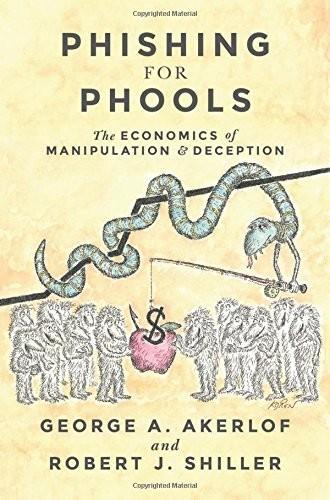
Phishing for Phools: The Economics of Manipulation and Deception
by
George A. Akerlof
,
Robert J. Shiller
and
Stanley B Resor Professor Of Economics Robert J Shiller
Published 21 Sep 2015
Relative to all previous history, people in developed countries are doing remarkably well. Women in more than fifty countries, and men in eleven, have life expectancies of eighty years or more.1 Modern cars may have their problems and their recalls, but they now always have seatbelts; with rare exception cars are no longer—as Ralph Nader opined 50 years ago—“unsafe at any speed.”2 Remarkably, as of February 2013, there had not been a single commercial airline fatality in the United States for four years.3 Not only did the planes themselves have a perfect record; so too did the pilots and the mechanics who keep them in the air. With such records for safety and product quality, the questions arise: Is it purely the market system that brought us this success?
…
Chapter Eleven: The Resistance and Its Heroes 1. For 2013. World Bank, “Life Expectancy at Birth, Male (Years)” and “Life Expectancy at Birth, Female (Years),” accessed March 29, 2015, http://data.worldbank.org/indicator/SP.DYN.LE00.MA.IN/countries and http://data.worldbank.org/indicator/SP.DYN.LE00.FE.IN/countries. 2. Ralph Nader, Unsafe at Any Speed: The Designed-In Dangers of the American Automobile (New York: Grossman, 1965). 3. Jad Mouawad and Christopher Drew, “Airline Industry at Its Safest since the Dawn of the Jet Age,” New York Times, February 11, 2013, http://www.nytimes.com/2013/02/12/business/2012-was-the-safest-year-for-airlines-globally-since-1945.html?
…
The Emperor of All Maladies: A Biography of Cancer. New York: Simon and Schuster, 2011. Mulligan, Thomas S. “Spiegel Found Not Guilty of Looting S & L.” Los Angeles Times, December 13, 1994. Accessed May 1, 2015. http://articles.latimes.com/1994-12-13/news/mn-8437_1_thomas-spiegel. Nader, Ralph. Unsafe at Any Speed: The Designed-In Dangers of the American Automobile. New York: Grossman, 1965. Nash, Nathaniel C. “Savings Institution Milked by Its Chief, Regulators Say.” New York Times, November 1, 1989. National Association of Realtors. “Code of Ethics.” Accessed March 15, 2015. http://www.realtor.org/governance/governing.
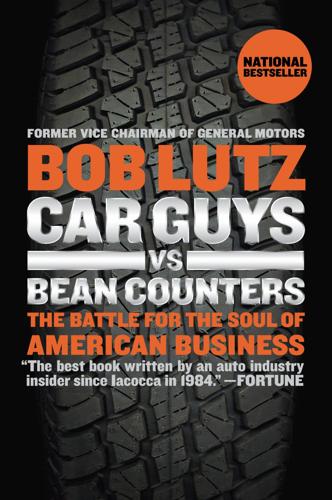
Car Guys vs. Bean Counters: The Battle for the Soul of American Business
by
Bob Lutz
Published 31 May 2011
Sure, some voiced concern and resentment, and best-selling books, like Vance Packard’s The Waste Makers and John Keats’s The Insolent Chariots, reflected a small but growing nucleus of concern over whether all this arrogant opulence and the ever-shorter fashion cycle were really of benefit to society. But these books were written by intellectual elitists . . . so who cared what they said? One incident that caused GM lasting harm was a 1965 book by a young lawyer and consumer advocate by the name of Ralph Nader. Unsafe at Any Speed accused the Corvair, different from other American cars with its rear-engine design, of being inherently unstable and accident-prone. Nader’s work gained huge notoriety and effectively shut down Corvair sales in the mid-1960s. Unaccustomed to being dented by a lone ideologue, GM hired investigators to delve into Nader’s personal life, seeking any salacious information that would silence him.
…
socialism Spielman, Joe Stempel, Bob Sticht, Paul Stronach, Franz Subaru subprime mortgages Summers, Larry Sun Yat-sen suppliers SUVs Hummer used Suzuki Tesla Motors “Total Quality Excellence,” Toyota Camry Corolla environmentally responsible reputation of Matrix Prius RAV4 recalls by Sequoia Tundra trucks full-size pickup “turn-on” products UAW (United Automobile Workers) unions Unsafe at Any Speed (Nader) value Vauxhall Insignia selling of VLEs (vehicle line executives) VMA-133 Volkswagen Phaeton Von Holzhausen, Franz Wagoner, G. Richard “Rick,” at congressional hearings electric and hybrid vehicles and GM’s bankruptcy and Lutz’s note to media and resignation of Walkuski, Mark Wallace,Tom Washington Times Waste Makers, The (Packard) Weber, Frank Welburn, Ed Whitacre, Ed Who Killed the Electric Car?
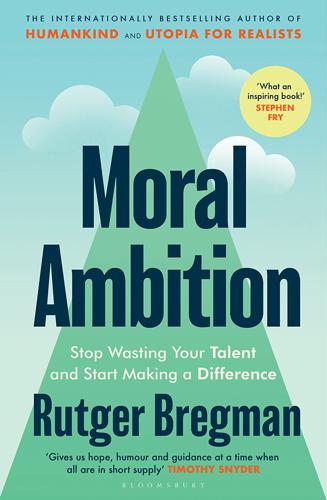
Moral Ambition: Stop Wasting Your Talent and Start Making a Difference
by
Bregman, Rutger
Published 9 Mar 2025
Norton (2021), p. 25. 4 Mark Green, ‘How Ralph Nader Changed America’, The Nation (1 December 2015). See also: Ralph Nader, ‘On Harvard Law School and Systems of Justice in America’, YouTube (14 September 2015), from 6:35. 5 See: ‘fortune 500: 1965 Full list’, cnn Money. 6 Ralph Nader, Unsafe at Any Speed: The Designed-In Dangers of the American Automobile, Grossman (1965). 7 Sabin, Public Citizens, p. 31. 8 ‘On 50th Anniversary of Ralph Nader’s Unsafe at Any Speed, Safety Group Reports Declining Death Rates Have Saved 3.5 Million Lives’, Center for Auto Safety (1 December 2015). 9 Peter Thiel and Blake Masters, Zero to One: Notes on Startups, or How to Build the Future, Currency (2014), p. 124. 10 Belinda Luscombe, ‘Who’s Afraid of Peter Thiel?
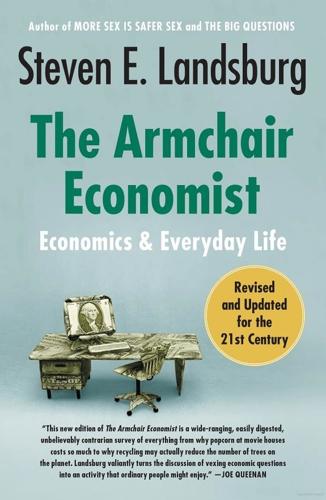
The Armchair Economist: Economics and Everyday Life
by
Steven E. Landsburg
Published 1 May 2012
Virtually all economists agreed that if the price were allowed to rise freely, people would buy less gasoline. Many noneconomists believed otherwise. The economists were right: When price controls were lifted, the lines disappeared. The economist's faith in the power of incentives serves him well, and he trusts it as a guide in unfamiliar territory. In 1965, Ralph Nader published Unsafe at Any Speed, a book calling attention to various design elements that made cars more dangerous than necessary. The federal government soon responded with a wide range of automobile safety legislation, mandating the use of seat belts, padded dashboards, collapsible steering columns, dual braking systems, and penetration-resistant windshields.
…
Bridgman, 83-85 Styrofoam, 144-145 Supermarkets, discount coupons, 161-162,165 Surrogate motherhood, 125 Swift, Jonathan, 153 T-shirts, 13, 17 Taos Pueblo, New Mexico, 166 Tariffs, 62 Taxes, 60-62 and cost-benefit analysis, 95-96 ex post facto, 151-152 who should pay, 142-143 Taxi prices, 166 Theft, cost-benefit analysis of, 97-98 Thomson, William, 58 Tipping, in restaurants, 19 Tipping busboys, 32-33 Tivoli Coffee Shop, ix Trash disposal, 144-145 Truman, Harry, 187 Unemployment statistics, 129-131 Unsafe at Any Speed, 3 Veil of ignorance, 57-58 Volunteer army, 65-66 Voting as a riddle, 11, 18 Voting procedures, 52-54 Weil, Andre', 18 Wheat prices, 164 Whiteman, Charles, 235 Will, George F., 126, 141 Winner's curse, 175, 179-180 Wonks, 44 Yakoboski, Paul, 233 Yeats, William Butler, 11

The Quiet Coup: Neoliberalism and the Looting of America
by
Mehrsa Baradaran
Published 7 May 2024
However, for some shareholders, GM’s efforts to hire employees of color were insufficient, given the scale and type of changes they saw as necessary. Calling themselves Campaign GM, these “activist shareholders” (before the term was coined) were organized by a group of young lawyers affiliated with Ralph Nader. Nader, whose 1965 book Unsafe at Any Speed accused the automakers of recklessly endangering drivers, was already familiar to the GM leadership, which had been spying on him for a few years, attempting to find some controversy with which to smear the rabble-rousing corporate crusader. By 1970, Nader was a trailblazer of public interest law, and his Nader’s Raiders were all graduates of top law schools.
…
P., 4, 198, 254, 291, 351 Morgan Stanley, 267, 268, 290 Morrison, Alan, 106–7, 113 mortgage-backed securities, 262–63, 268, 275, 343 mortgage loans, 15, 17, 19, 64, 69, 122, 199–201, 212, 216, 249, 250, 275–76, 288, 293, 300, 307–8, 316, 343, 358, 364 Mossadegh, Mohammad, 47, 60, 61 motherhood penalty, 327 Mothers in Harlem, 202 Mott, Charles, 77 Mott, Stuart, 77 Mozambique, 39 MSNBC, 141 Murray, Charles, 89, 362 The Bell Curve, 216 Musk, Elon, 326–29, 331 Myrdal, Alva, 40 Myrdal, Gunnar, 31–33, 38, 40, 59, 60, 69, 144, 235 An American Dilemma, 12–13, 32 Monetary Equilibrium, 32 Nabisco, 271 Nader, Ralph, 76–77, 86, 106–8, 113 Unsafe at Any Speed, 76 Naderites, 87, 107 Nader’s Raiders, 76–77 Nakamoto, Satoshi, 333 Nasdaq, 300 National Aeronautics and Space Administration (NASA), 44, 236, 327 National Association for the Advancement of Colored People (NAACP), 120, 126, 144 National Bank Act (1863) (NBA), 263–64 National Bureau of Economic Research, 168 national deficit, 236, 238 National Economic Council, 301 National Guard, 5 National Health Service, 57, 92 nationalism, 180, 318 National Review, The, 26–27, 56, 109, 185, 188, 191, 230 National Security Agency (NSA), xxiv national sovereignty.
…
O’Brien, 102 Universal Declaration of Human Rights, 42 University of California–Berkeley, 153, 154, 160 University of California–Davis, 124 University of California–Irvine, 347 University of California–Los Angeles (UCLA), 77–78 University of Chicago, 20, 22, 54, 65, 73, 91, 94, 134, 139, 158, 221, 232, 236. See also Chicago School University of Chicago Law School, 150, 162 University of Colorado, 88 University of Miami, 159 University of Michigan, 118 University of Rochester, 159 University of Virginia, 222 Unsafe at Any Speed (Nader), 76 “Urban Riots of the 1960s, The” (Greenspan), 3, 4, 9–10 U.S. Court of Appeals, 117–18, 139, 162, 202 U.S. Steel, 88–89, 271–72 “Uses and Abuses of ‘Neoliberalism, The” (online forum), xl usury (usury laws), 189, 195–202, 205–9, 213, 215, 217, 244, 275, 365 Utah, 213 utility (utility maximization), 162–63, 166, 171, 174, 176, 187 vaccines, 38, 341 value, 361–62 Vanderbilt, Cornelius, 198, 328 Vedic texts, 196 Venezuela, 47 venture capital, 323–24, 326, 327, 345, 363 venture capital funds, 336–37, 361 Vermont, 108 Versailles Peace Conference, xv Vienna, Austria, 42, 49 Vietnam War, 25, 61, 62, 77, 102.
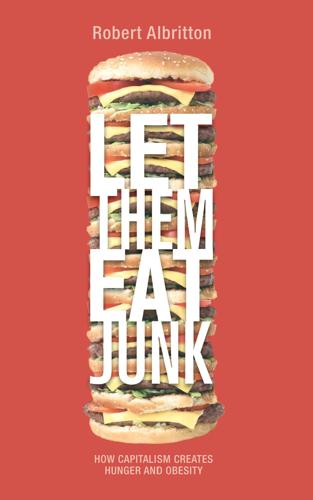
Let them eat junk: how capitalism creates hunger and obesity
by
Robert Albritton
Published 31 Mar 2009
Marx (1976: 254). At the time of writing this is all too real. For example, until they faced strong international competition that forced them to change, the American auto industry was criticized for “planned obsolescence”. The poor quality of some American cars was finally exposed by books like Nader’s Unsafe at Any Speed (1965). Marx (1976: 358). Read any good history of trade union organizing for many examples. Many of the welfare state gains and gains of trade unions in the 1950s and 1960s were later rolled back. For an interesting discussion of temporality and capitalism see Postone (1996). Marx (1976: Part V).
…
Mull, D. and Kirkhorn, S. (2005) “Child Labor in Ghana Cocoa Production”, Public Health Report Vol. 120, No. 6 [online] <www.pubmedcentral.nih.gov/ anticlererder.fcgi?artid=1497785>. Murray, B. (2001) “Fast-food culture serves up super-size Americans” Monitor On Psychology, Vol. 32, No. 11, December [online] <www.apa.org/monitor/ dec01/fastfood.html>. Nader, R. (1965) Unsafe at Any Speed, New York: Grossman. Nature (2006) “Climate change reducing the productivity of phytoplankton”, November 7. Ndiaye, P. A. (2007) Nylon and Bombs: Dupont and the March of Modern America, Baltimore, Md.: Johns Hopkins Press. Nestle, M. (2002) Food Politics, Berkeley: University of California Press.
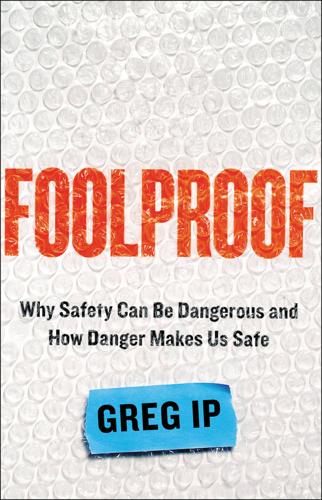
Foolproof: Why Safety Can Be Dangerous and How Danger Makes Us Safe
by
Greg Ip
Published 12 Oct 2015
The complicated consequences of helmets that so vex professional sports is part of a much larger debate that has long preoccupied and divided engineers and ecologists. The federal government had begun to assert its oversight over the economy and the environment during the Progressive Era, and in the 1960s, that oversight expanded significantly, most noticeably onto the highways. The catalyst was the publication in 1965 of Unsafe at Any Speed: The Designed-In Dangers of the American Automobile by Ralph Nader. Nader had worked for Daniel Patrick Moynihan at the Department of Labor, and his book exposed how the auto manufacturing industry had knowingly built dangerous features into their cars, such as chrome on the dashboard that reflected sun into drivers’ eyes and hood ornaments that were unnecessarily dangerous to pedestrians.
…
Nader might have remained an obscure activist and author of an unread book had General Motors not embarked on a campaign to challenge his credibility, hiring a private investigator to dig into his background. The result was a lot of publicity for Nader and his book. GM’s president later apologized to Nader. Unsafe at Any Speed triggered several congressional hearings and was instrumental in the passage of the National Traffic and Motor Vehicle Safety Act in 1966, which for the first time gave the federal government authority to set standards for automobile and highway safety. Among the first standards passed were rules requiring seat belts for all occupants, energy-absorbing steering columns, a padded instrument panel, and dual braking systems.
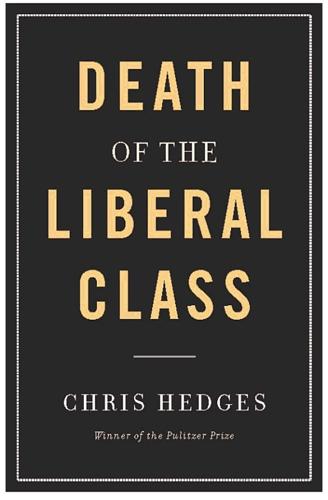
Death of the Liberal Class
by
Chris Hedges
Published 14 May 2010
They achieved great things. There was collaboration. We provided the newsworthy material. They covered it. The legislation passed. Regulations were issued. Lives were saved. Other civic movements began to flower. “Ralph Nader came along and did serious journalism. That is what his early stuff was, such as Unsafe at Any Speed,” the investigative journalist David Cay Johnston told me:The big books they put out were serious, first-rate journalism. Corporate America was terrified by this. They went to school on Nader. They said, “We see how you do this. You gather material, you get people who are articulate, you hone how you present this.”
…
The hollowing out of communities and the movement of jobs to fascist and communist regimes overseas that know how to put the workers in their place? There is no breaking point. And when there is no breaking point, you do not have a moral compass. The system is broken. And the consumer advocate who represented the best of our democracy, and the best of the liberal class, was broken with it. As Nader pointed out after he published Unsafe at Any Speed in 1965, it took only nine months for the Federal Government to regulate the auto industry for safety and fuel efficiency. Three years after the collapse of Bear Sterns, however, there is still no adequate financial reform. The large hedge funds and banks, from Citibank to Goldman Sachs, are using billions in taxpayer subsidies to engage once again in the speculative games that triggered the first financial crisis and will almost certainly trigger a second.
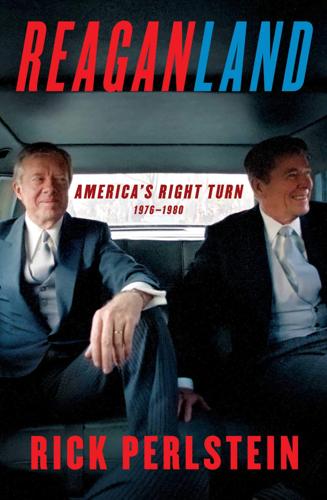
Reaganland: America's Right Turn 1976-1980
by
Rick Perlstein
Published 17 Aug 2020
Pertschuk was sympathetic—but smugly lectured this strange young man why the sort of reforms he had in mind were politically impossible. Unsafe at Any Speed: The Designed-in Dangers of the American Automobile came out in November 1965. The New York Times acknowledged it in a short item on page 68. Eight months later, Times Book Review included it last in a wrap-up of eight other new automotive books that better reflected how Americans thought of their cars—titles like The Gallery of the American Automobile and The Motor Car Lover’s Companion Unsafe at Any Speed sold respectably, and the modest, quiet community of auto safety advocates welcomed Nader into their ranks.
…
Eloquently, he proved that GM’s engineers knew the Corvair was unsafe but had no institutional power to make changes; documented how cost and styling concerns trumped safety in automotive design; explained how a bought-and-paid-for automotive press reported on the Corvair’s handling irregularities as a charming sports-car quirk; and how Detroit sold necessary safety features as costly options, and GM buried the life-and-death fact information that the Corvair’s rear tires should be inflated at approximately twice the pressure as the front ones (if owners didn’t want the car to flip over) deep inside the owner’s manual, like instructions on how to open the trunk. He scourged industry safety propaganda that focused obsessively on driver error—“It’s the nut behind the wheel” was a slogan of the industry-captured National Safety Council—even though most injuries, Nader rivetingly explained, were caused by what Unsafe at Any Speed called the “second collision”: knobs that protruded like daggers, steering wheels that shot forward like projectiles, dashboard edges so sharp they might as well be shards of glass. Government was complicit. The President’s Committee for Traffic Safety, Nader said, was an agency staffed by civil servants but funded by the auto and insurance industries.
…
He then complained that Nader was “using this forum to sell his book.” Robert F. Kennedy replied that “the person who sold the most books today for Mr. Nader was the Senator from Nebraska.” * * * THE BUMPTIOUS GENTLEMAN FROM NEBRASKA was not, it soon arrived, Ralph Nader’s only harasser. While he was working on Unsafe at Any Speed, Nader had complained to friends that strange men were following him. That an attractive woman approached him, seeking his company. That, the night before his congressional testimony, at the $80-a-month boardinghouse where he rented a room, he got several harassing phone calls. Ralph Nader had always been an odd duck.
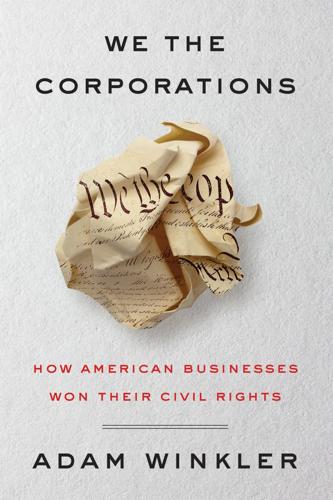
We the Corporations: How American Businesses Won Their Civil Rights
by
Adam Winkler
Published 27 Feb 2018
Nader became America’s most famous anticorporate crusader thanks to the bumbling way that General Motors, America’s biggest car company, tried to silence him. Nader had first written about automobile safety in a student paper at Harvard Law School, which he expanded into a book after graduation. Published by a startup publisher in 1965, Unsafe at Any Speed was a wonky policy book filled with data about what Nader called the “designed-in dangers” of American cars. The book was an exhaustive muckraking critique of one of the nation’s iconic commercial products. It showed that carmakers spent millions of dollars on comfort and styling but did little to improve car safety, despite nearly 40,000 fatalities and 1.5 million injuries per year.
…
On Nader, see Evan Osborne, The Rise of the Anti-Corporate Movement: Corporations and the People Who Hate Them (2007), 59; “The U.S.’s Toughest Customer,” Time, December 12, 1969, 89; Charles McCarry, “A Hectic, Happy, Sleepless, Stormy, Rumpled, Relentless Week on the Road with Ralph Nader,” Life, January 21, 1972, 45; Jack Doyle, “GM & Ralph Nader, 1965–1971,” PopHistoryDig.com, March 31, 2013, available at http://www.pophistorydig.com/?tag=ralph-nader-time-magazine; Barbara Hinkson Craig, Courting Change (2004), 1–32. See Ralph Nader, Unsafe at Any Speed: The Designed-In Dangers of the American Automobile (1966). 11. Justin Martin, Nader: Crusader, Spoiler, Icon (2002), 57. 12. See Doyle, “GM & Ralph Nader”; “The U.S.’s Toughest Customer,” Time, December 12, 1969, 89. 13. Charles McCarry, Citizen Nader (1972), 29; Doyle, “GM & Ralph Nader” (quoting the Washington Post); McCarry, “Relentless Week,” 91; “Nader’s Zenith,” Washington Post, August 30, 1966, A18. 14.
…
Painter, 341 Swisher, Carl B., 146 Sydnor, Eugene, Jr., 283–85, 289, 300 syllabi, 150–53, 157, 177–78 synthetic growth hormones, 300 Taft, Henry Waters, 162–75, 166, 185–89, 219, 303 Taft, William Howard, 163, 303–4 Taft-Hartley Act (1947), 219, 332 Taney, Roger, xix, 74–75, 89–97, 96, 98, 101–3, 107–10, 115, 125, 127, 132, 142, 145–46, 158, 163, 181, 183, 197, 225, 261–62, 265, 266, 298, 381, 387, 390, 400 Taney court, 74–75, 90, 95–97, 101–3, 107–10, 115, 125, 132, 145–46, 181, 183, 197, 261–62, 266, 381, 400 Tanforan racetrack, 220–21 taxation, 23, 25–31, 40–41, 43, 59, 62, 67, 69, 88, 90, 99, 100, 179, 223, 305–23, 359–60, 385 tax collectors, 41, 43, 59, 62, 67, 69 tax cuts, 359–60 tax exemptions, 88 tax penalties, 179 Tea Act (1773), 27, 29 Tea Party, xxiii, 325–26, 359–60 tea taxes, 25–31 telecommunications industry, 298 telegraph, 106, 107, 139 television, 286–87, 300, 303–4, 354–55 temperance movement, 223 Tempest, The, (Shakespeare), 10 Ten Commandments, The (film), 330 Tennessee, 124 Terry, David, 137–38 tetracycline, 291–92 Texaco, 393 Texas, 202, 209 Texas, University of, Law School of, 341 Texas and Pacific Railroad, 242 textbooks, 237, 286, 386 Thanksgiving, 17 think tanks, 302, 303 Thirteenth Amendment, 159, 267 Thomas, Clarence, 350, 356, 358, 363, 363 “Three Musketeers,” 251, 252–53, 254 Tilden, Samuel J., 148 Tillman, Benjamin “Pitchfork Ben,” 217–19 Tillman Act (1907), 218–19, 220, 223, 227, 238, 315–16, 317, 321, 324, 362, 368–69, 371, 401 Time, 280, 289 tobacco industry, xxi, 14–15, 18, 161–69, 162, 170, 171, 173–75, 185, 189, 191, 202, 213, 279–83, 287–89, 295, 298, 299, 303, 321 Tobacco Trust, 161–63, 162, 170, 173, 175, 185, 189, 191, 298, 303 Tokyo Rose, 367 toll bridges, 35–36, 95–97 “too big to fail” firms, 359–60 “total attack” program, 304 trade, 97–103, 170–71, 298, 305–23, 359–60, 385 transcontinental railroad, 142 treason, 51, 164 Treasury Department, US, 93–94 Treatise on the Law of Corporations, A, (Field), 51 Trenton riots (1968), 349 trials, xvi, 23, 24, 121, 164, 172–73, 282, 283, 359, 369, 400 Tribe, Laurence, 347 Tribune Tower, 241–42 trucking companies, 275–76 Trump, Donald, 327 trusts, 157, 161–62, 169, 171, 177, 179, 185, 189, 196–97, 197, 202–3, 218, 282, 298, 320, 382 see also monopolies Tutankhamen, 167 Twain, Mark, 155 Twenty-Eighth Amendment, 375–76 20,000 Leagues Under the Sea (Verne), 139 ultra vires (“beyond the power”), 49 “umpire” analogy, 139, 298, 356, 388–89 “unalienable rights,” 28 unemployment rate, 118, 344 union dues, 331–32, 332 United Fruit Corp., 305 United Negro College Fund, 300 United States: agriculture of, 40, 106, 118, 198 budget of, 213 citizenship of, 44, 53–54, 55, 57, 59, 60, 61, 65, 74, 97–103, 109–10, 115, 125, 128, 135–36, 254, 257–58, 265–67, 309, 368, 392 colonial period of, 3–19, 20, 24–25, 26, 28, 76, 270, 399–400 concentration of wealth in, 4, 40, 145, 196–97, 212–16, 285 corruption in, 36, 90–91, 103–4, 123, 129, 142, 149–50, 165, 173, 176, 196–97, 197, 202–8, 212 215–17, 226–27, 236, 286, 309, 314, 315–16, 320–23, 329, 361 currency of, 38 democratic system of, 5, 14, 15, 17, 18–19, 21–22, 31, 90–92, 101, 192, 212, 222, 232, 248, 249, 251, 252–55, 263, 293–94, 319, 320, 337, 356, 365–68, 374–75, 389–95 economy of, 25, 26, 38–39, 44, 69, 90, 93, 97–103, 117–18, 122, 140–41, 154, 163, 198, 233, 235, 256, 285, 308, 344, 359–60 federal government of, 177, 218, 240 immigration to, 153–54, 199, 232, 238, 239–40 industrialization of, 106, 117–18, 140–41, 213–14, 247 living standards in, 140 mass media in, 326–27, 360 national debt of, 25, 38–39, 70 national enterprises of, 35–36 northern states of, 40, 69, 90 partisan politics in, 94, 148, 208, 217–18, 302–4, 308–9, 326–28, 329 polarization in, 326–27 southern states of, 123–28, 131, 158, 159, 217–18, 256–75, 284, 327 territories of, 261 two-party system of, 36, 39, 40 unemployment rate in, 118, 344 United States Brewers Association, 223–26, 402 United States Court of Claims, 149–50 United States Reports, 149–53, 157, 231 United States v. Carolene Products Co., 231, 256, 264, 269, 276–77, 278 United States v. Cruikshank, 129 United States v. Reese, 129 United States v. United States Brewers Association, 223–26, 402 University of California v. Bakke, 277, 278 Unsafe at Any Speed (Nader), 285–86 unwritten rights, 182 US Court of Appeals for the Ninth Circuit, 137, 153–54 US District Court of New York, 263 U.S. Steel, xxi, 302, 304, 374 Utah, 261 Valentine, Lewis J., 293 Valentine v. Chrestensen, 292–93, 294, 295, 297, 402 Vanderbilt, Cornelius, 121, 161, 181 Van Devanter, Willis, 251, 252 Verizon, 305 Vermont, 124, 375 Verne, Jules, 139 vetoes, 93 video-on-demand documentaries, 351–52 Vietnam War, 349 Virginia, 103–4, 260–62, 275, 284, 289, 290–300, 318 Virginia, University of, Law School of, 393 Virginia Company of London, 5–19, 12, 15, 26, 31, 63, 86, 90, 281, 391, 399 Virginia Massacre (1622), 18 Virginia Pharmacy Board v.
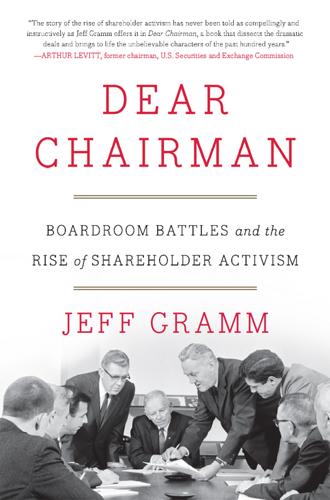
Dear Chairman: Boardroom Battles and the Rise of Shareholder Activism
by
Jeff Gramm
Published 23 Feb 2016
By sitting idle while the company endured numerous public failures over three decades, the shareholders helped perpetuate GM’s struggles. They deserve as much blame for General Motors’ decline as any other party. GM’s first major public failure was the Corvair, “The One Car Accident” described in Ralph Nader’s Unsafe at Any Speed. The 1959 Chevrolet car had serious defects that left it prone to losing control at higher speeds.69 Despite objections from many of its engineers, GM pushed ahead with the car, which ended up killing drivers in large numbers. When the fourteenth floor rejected Chevrolet’s request to add a $15 stabilizing bar to the vehicle, the division head threatened to resign and publicize his dissent.70 GM’s executives relented, but it was too late.
…
Louis & Southwestern Railroad, 256–57n24 stock exchanges, 141 stock market corporate control and, 7 go-go era of, 60–61, 67, 96 Graham and, 1–2, 5, 6, 7, 256n11 stock message boards, 153–54 stock parking, 88, 152 stocks vs. bonds, 5, 7 expected return formula, 64–65 intrinsic value in, 5 price performance, 66 Storer Broadcasting, 89 Storz Instruments, 268n16 Stout, Lynn, 194 Studebaker, 265n12 Stutt, William, 132 supervoting shares, 189, 199 Susquehanna Railroad, 210 SWIB (State of Wisconsin Investment Board), 115, 116, 120, 121 Syratech, 229–30 Takahashi, Dean, 175 Take on the Street (Levitt), 139–40 Tandy Leather Factory, 195–96 Target, 171 tax avoidance schemes, 88 tender offers hostile, 44, 61, 62–63, 67, 69–70, 73–74, 80 two-tier, 82, 263n42 Tepper, David, 153, 179 Tesla Motors factory, 109 Texaco, 74, 262n16 Texas National Petroleum, 57 Texas public education and Perot, 95 Third Point, 148–49, 151, 153–54, 156–57, 229 13D filings, 133, 147, 175, 176 13D letters, xx, 147, 148, 149–51, 154–57, 197–98 This American Life (radio show), 110 Thorndike, William, 161 TIAA-CREF, 120, 148 timber business, 172 Time, 25–26, 36, 39–40 Time Warner, 14 Tisch, James, 175, 186, 240 Tonga Partners, 238 Toyota, 96, 107–8, 109–11, 119, 266n41 The Toyota Way (Liker), 109 Train X, 211 Trauber, Ami, 229–30, 232, 233 Tudor Futures Fund, 148–49 TWA, 85–86, 93 Twentieth Century-Fox, 21 two-tier tender offers, 82, 263n42 U2, 151–52 Uintah Railway, 39 United Auto Workers (UAW), 97, 225, 226 United Cigar–Whelan Stores Corporation, 21 United Industrial Corporation, 43 University of California, Los Angeles, 90 University of Chicago, 64–65 Unocal, 74, 80, 81 Unruh, Jesse “Big Daddy,” 75, 115 Unsafe at Any Speed (Nader), 118–19 U.S. Congress, 86, 87 U.S. Department of Agriculture, 51–52 U.S. Senate Committee on Banking, 67 U.S. Supreme Court, 7, 25 Valhi, 62–63 ValueAct, 151, 164, 165 value investing Ackman’s style of, 170 Buffett’s style of, 45, 60 Cannell’s style of, 179 Graham’s style of, 1–2, 60 teaching of, xx–xxi Value Investor Insight, 179 Vanderbilt, Cornelius, 2, 22 Vanderbilt, Harold S., 26, 28, 34, 35, 209 Vanderbilt, William H., 28 Vanderbilt line, 22 Vanguard Group, 240, 249 Vanity Fair, 193 Van Sweringen brothers, 24 Vega (GM), 119 Vietnam and Perot, 95 the Voice, 50–51, 52, 53 voting rights, special, 189, 197, 199 Waddell and Reed, 175, 188 Wallace, Lila Bell Acheson, 34 Wall Street acquisitions rewarded by, 61, 67 as elite insiders’ club, 2, 16, 17 Graham’s career beginnings on, xiv, 3 Icahn’s arrival on, 77 Peter Cannell and, 180–81 Tino’s swindle effects on, 55 Young’s time on, 23–24 Wall Street Journal, 50, 52, 53, 65–66, 105, 116, 196 Wal-Mart, 65–66, 200 Walt Disney Company, 80, 141 The Warren Buffett Way (Hagstrom), 165 Western Sizzlin, 165, 166 White, William, xi contract of, 213–14 Levin compared to, 183 proxy fight team of, 27–28 sale of C&O’s shares and, 29–31 Young on, 208, 210, 213–14, 215 Young’s proposal to, 26–27 Young’s proxy fight with, 31–38 The White Sharks of Wall Street, 41–42 Whitney, George, 28, 35 Wickes, 88–89 Wilson, Charles, 117–18 Wilson, J.
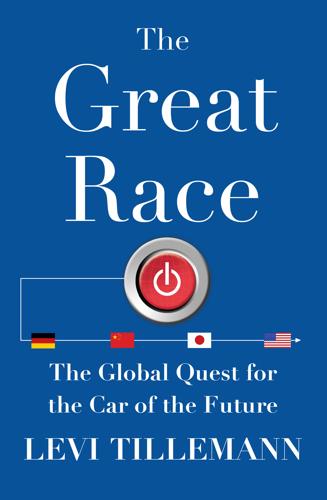
The Great Race: The Global Quest for the Car of the Future
by
Levi Tillemann
Published 20 Jan 2015
In total, the auto industry built some 4,131,000 engines (including 450,000 aircraft engines and 170,000 marine engines), 5.9 million guns, and 27,000 aircraft for the war effort—crushing the Axis against the anvil of U.S. industrial might and establishing the military prerequisites for a new Pax Americana during the latter half of the twentieth century. After World War II, the market for automobiles roared and it fueled the astounding growth of America’s suburbs. But in 1965, Ralph Nader put the brakes on this unfettered expansion when he published the book Unsafe at Any Speed, which caused a sensation in its treatment of the dangers of modern cars. This as much as anything symbolized the beginning of an arms race between auto producers and regulators—in safety, efficiency, emissions, and quality—that continues to this day. Fixing the problems outlined in Nader’s book would not be easy.
…
See also Paulson, Henry “Hank” Troubled Assets Relief Program (TARP), 158, 161, 166, 167, 169, 172 trucks and Chinese auto industry, 96, 97 EV, 94 fuel economy for, 142 and Japanese auto industry, 43, 47, 50, 52 price of, 43 at Toyota, 151 and U.S. auto industry, 153 and U.S. economy in 2008, 158 See also specific manufacturer Tsinchuan Automotive Company Ltd., 231 Tzero (AC Propulsion EV), 147 Uber (car service), 272 Uchiyamada, Takeshi, 82–83 United Kingdom: auto production in, 23 United Nations Development Programme (UNDP), 206 United Nations Framework Conference on Climate Change (Kyoto, 1997), 83–84 United States auto industry-government relationship in, 37, 170 bailout/subsidies for auto industry in, 159–61, 166–84, 238, 239–40 bank bail out in, 158 Bush administration and, 109–11 and California’s prelude to the Great Race, 34 CARB relations with, 37–39, 73–74, 75, 142, 152, 153 and “cash for clunkers” program, 209 and characteristics needed to win Great Race, 27–28 Chinese relations with, 2, 16, 19, 20, 212, 237 Clinton administration and, 81–82 commercialization of EVs in, 257 competition and, 41, 47–49, 78, 108, 150–51, 170, 212, 237 economy of, 153, 157–61, 165, 166–69, 178, 254 environmental issues in, 56, 64–65, 161, 172 EV debate in, 238–39 and EV sales, 184 and EV tax subsidies, 179–81 fears of, 274 and foreign technology, 215 future mission of, 254 future of auto industry in, 274 and gasoline price, 153 and history of global auto industry, 23 image of, 212 industrial policy in, 7–9, 102–3 and Japanese ban on auto imports, 52, 103 Japanese exports to, 41, 55, 59, 81 Japanese relations with, 41, 44, 47–49, 78, 108, 170 Japan’s imports from, 42–43 labor in, 59 leadership in, 254 lobbying by auto industry in, 38, 161, 177, 262 Nissan sales/exports to, 138, 228 and Obama’s support for auto industry, 170, 172 as Pacific superpower, 44 politics and, 153, 161, 173–76, 274 post-World War II years in, 7, 19, 23 prelude to the Great Race in, 16, 20, 21, 23, 27–28 resurgence of, 82 role in Great Race of, 237 success of, 238 and technology in the future, 274 and Tillemann’s research about auto industry, 5 Toyota and, 81–85, 150–51 and winner of Great Race, 252, 254 See also specific person, agency, manufacturer, or topic Unsafe at Any Speed (Nader), 23 UQM Technologies, 78 USSR. See Russia/USSR Vantage Point Venture Partners, 221 “Vehicle to Home” (V2H) system, Nissan’s, 196, 258 venture capitalists. See investors, equity; specific investor Vermont: GM lawsuit against, 142 Volt (Chevrolet), 20, 150, 161–63, 164–65, 166, 180, 215, 234–35, 239, 244, 245, 260, 261 Volvo, 241, 250, 271 Wada, Kenichiro, 129, 134 Wagoner, Rick, 160, 166 Wall Street Journal, 174, 241 Wan Gang at Audi, 16, 95, 96, 99–101 and China’s prelude to the Great Race, 15–16, 17, 18 EVs and, 16, 18, 112–13, 203, 204, 207, 224, 235, 249, 250, 251 and fuel cell technology, 115, 207 influence of, 112–13 “leapfrogging” plan of, 103, 210, 211 as minister of science and technology, 203, 204 motivation of, 102 Ouyang’s dispute with, 224 personal and professional background of, 16, 95–96, 98–101, 113 return to China of, 102–3, 113 as sea turtle, 112–13 and Shanghai World Expo (2010), 15–16, 17, 18 Wang Chuanfu, 229–30, 231 Wang Daheng, 113 Wang Dazhong, 227 Wang Ganchang, 113 Wanxiang Group, 178 Wen Jiabao, 199 Who Killed the Electric Car?
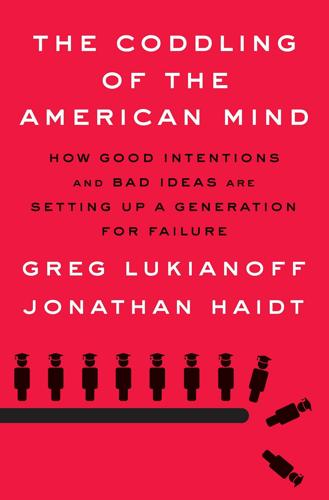
The Coddling of the American Mind: How Good Intentions and Bad Ideas Are Setting Up a Generation for Failure
by
Greg Lukianoff
and
Jonathan Haidt
Published 14 Jun 2018
The Rise of Safetyism In the twentieth century, the word “safety” generally meant physical safety. A great triumph of the late part of that century was that the United States became physically safer for children. As a result of class action lawsuits, efforts by investigative journalists and consumer advocates (such as Ralph Nader and his exposé of the auto industry, Unsafe at Any Speed), and common sense, dangerous products and practices became less prevalent. Between 1978 and 1985, all fifty states passed laws making the use of car seats mandatory for children. Homes and day care centers were childproofed;choking hazards and sharp objects were removed. As a result, death rates for children have plummeted.13 This is, of course, a very good thing, although in some other ways, the focus on physical safety may have gone too far.
…
abuse, 25, 26, 175 Adam, 166 Adam Walsh Child Resource Center, 166 Adler, Eric, 198–99 adulthood, 148, 250, 257 Adverse Childhood Experiences (ACE), 175, 176 aggression, 40, 71 in girls versus boys, 155, 161 microaggressions, 40–46, 51, 71, 77, 145, 205, 210, 260 Albright, Madeleine, 48 Alexander, Larry, 107–8 Alexander, Michelle, 74 Algoe, Sara, 159 allergies, 21–22 peanut, 19–21, 23–24, 30, 164, 236, 237 American Academy of Pediatrics, 247 American Civil Liberties Union (ACLU), 92, 216 American Enterprise Institute, 87 American National Election Study, 129 America’s Most Wanted, 166 Antifa, 81, 83, 91 Antifragile (Taleb), 22–23, 164, 170 antifragility, 22–24, 28, 31, 146, 164, 176, 178, 193, 206, 237, 246 anxiety, 5, 12, 24, 30, 33–34, 125, 126, 157, 164 cognitive behavioral therapy and, 7–8, 29 cognitive distortions and, 7–8, 10, 158–59, 161 depression and, 158 in girls versus boys, 149–51, 160 overprotection and, 183 play deprivation and, 183 rates of, 149–51, 157–58, 160, 183, 185 safetyism and, 158 Aristotle, 253 art of association, 191–92, 194, 211 Ashworth, Kevin, 163 Atlantic, 42, 72, 95, 190 “The Coddling of the American Mind” (Lukianoff and Haidt), 10–12, 31, 37, 121, 145, 156, 205 Atomwaffen Division, 133 Axelrod, David, 96 Baby Boom generation, 110, 111, 167, 174 Baehr, Jason, 247–48 Balko, Radley, 74 Barrett, Lisa Feldman, 95 Beck, Aaron, 36–37 Beck, Glenn, 132 Bell Curve, The (Herrnstein and Murray), 87 Berenstain, Nora, 105 Bergen Community College, 201 Bergesen, Albert, 100–103, 105–7, 119 Berkeley, University of California at, 12, 81–87, 90, 94, 120 bias reporting systems, 204–6, 212 Big Sort, The: Why the Clustering of Like-Minded America Is Tearing Us Apart (Bishop), 130 Bilge, Sirma, 68 Bill of Rights, 222–23 Bishop, Bill, 130 Black Lives Matter (BLM), 75, 88, 133, 134 Black Swan, The (Taleb), 22 blaming, 38, 39, 278 Bloom, Paul, 218 Boethius, 34, 35 Bond, Sarah, 136–37 brain, 153, 181–84, 193, 194 Breitbart News, 81 Bridges, George, 115–17, 119, 198 Brookings Institution, 86 Brown, Stacy, 116, 118–19 Brown University, 26–28, 70, 259 Bruni, Frank, 190 Buddha, ix, 34, 35, 60, 95, 241 bullying, 25, 26, 246 call-out culture, 5, 10, 71–73, 77, 86, 158 Cambridge Analytica, 265 Campbell, Bradley, 209, 210 Carlson, Tucker, 118, 133, 134 Carter, Jimmy, 224 catastrophizing, 38, 50, 84–85, 89, 145, 190, 201, 212, 277 Center for Collegiate Mental Health, 156 Centers for Disease Control, 190 charitable interpretations, see principle of charity Charleston church shooting, 139 Charlottesville rally, 90–92, 94, 97, 139 Chicago Statement on Principles of Free Expression, 255–56, 268, 279–81 Chinese Cultural Revolution, 100–102 children academic and career pressures on, 174, 235, 236 adversity and, 175–76 books for, 172 cognitive behavioral techniques for, 241–42 community of, 239–40 conflict resolution and disagreement skills in, 191–92, 194, 211, 212, 240, 248, 258–60 democracy and, 191–94 and fear of strangers and abduction, 165–67, 178, 186, 194, 235, 238 mindfulness and, 242 phones and, see phones play and, see play school and, see school sleep and, 250 structured lives of, 188–89, 246 suggestions for, 235–51 summer camps for, 240 wisdom and, 235–51 year of service or work after high school, 250–51, 257 see also parenting Christakis, Erika, 56–57, 71, 102–3, 127, 165, 187, 188, 210–11, 240 Christakis, Nicholas, 56–57, 127 Chronicle of Higher Education, 208 Chua, Amy, 267 Ciccariello-Maher, George, 135 civil rights laws, 206, 207 civil rights movement, 60–61, 65, 67, 84, 216, 221, 222, 230 Claremont McKenna College (CMC), 53–55, 88–90, 102–3, 120, 134, 175 Clark, Jenna, 159 Clinton, Bill, 222, 224 coddling, use of word, 13–14 cognitive behavioral therapy (CBT), 3, 7–9, 14, 29, 51, 95, 144–45, 196, 259 Boethius and, 34–36 children and, 241–42 effectiveness of, 37 how to do, 275–78 as microaggression, 42 cognitive distortions, 7–10, 14, 36–40, 50, 84–85, 89, 144–45, 196–97, 212, 259 anxiety and, 7–8, 10, 158–59, 161 categories of, 37–38, 277–78 depression and, 7–8, 10, 36–37, 150, 158–59, 161 parenting and, 177–78 safetyism and, 177–78 see also emotional reasoning college campuses, see universities Collins, Patricia Hill, 68 Collins, Richard, III, 139 Columbia University, 6, 7, 40, 255 Coming Apart (Murray), 87 Common Core, 188 common-enemy identity politics, 62–67, 71–73, 76, 77, 89–90, 119–20, 244 common-humanity identity politics, 60–62, 74–76, 221, 244 Common Sense Media, 249 concept creep, 24–27, 31–32, 105, 150, 205 harassment and, 206–9 safety and, 24–25, 27, 259 trauma and, 25–26 violence and, 85–86 confirmation bias, 109, 131, 258, 259 conflict resolution and disagreement skills, 191–92, 194, 211, 212, 240, 248, 258–60 Congress, 131 Consolation of Philosophy, The (Boethius), 34, 35 Constitution, U.S., 222–23 Cooper, Harris, 185, 245 correlation: causation and, 227–29, 231–32 spurious, 152, 228 Coulter, Ann, 83 Crenshaw, Kimberlé Williams, 67–68, 71, 221 Crick, Nicki, 155 crime, 167, 186, 238, 266 criminal justice system, 74 critical thinking, 39, 113, 259 CYA (Cover Your Ass), 203, 211, 212 Daily Californian, 84 Dalai Lama, 267 Day of Absence, 114–15 Deaner, Robert, 225 debate clubs, 248 democracy, 66, 191–94, 222–23, 254 Democracy in America (Tocqueville), 195 Democrats, 129–31, 213, 216 see also politics Department of Education, 207 Department of Justice, 207 depression, 5, 12, 24, 30, 125, 126, 143, 157, 164, 250 activities correlated with, 152–53 anxiety and, 158 cognitive behavioral therapy and, 7–8 cognitive distortions and, 7–8, 10, 36–37, 150, 158–59, 161 first-person account of, 143–44 in girls versus boys, 149–51, 160 play deprivation and, 183 rates of, 149–50, 157–58, 160, 183, 185 safetyism and, 158 see also suicide Depression, Great, 130 Deresiewicz, William, 189 Diagnostic and Statistical Manual of Mental Disorders (DSM), 25 dichotomous thinking, 38, 39, 50, 85, 89, 145, 177, 277 dignity culture, 209–10 disconfirm, inability to, 278 disconfirmation, institutionalized, 109, 110, 229 discounting positives, 38, 177, 277 distributive justice, 217–21, 227, 230, 231 Dolezal, Rachel, 104 Dreger, Alice, 254–55 Drexel University, 135, 202 Duckworth, Angela, 190 Duke, Annie, 248–49 Durden, Lisa, 134–35 Durkheim, Emile, 100, 102, 103, 106–8, 113–15, 120 Eady, Trent, 73 Eagleman, David, 58 Ebner, Julia, 266–67 economy, 13, 152 education: purpose of, 254 see also school; universities emotional reactivity, 95–96 emotional reasoning, 3, 4, 33–51, 119, 177, 202, 208, 212, 241, 247, 259, 278 disinvitations of speakers and, 47–51 microaggressions and, 40–46 “see something, say something” and, 203–4 subjective standards and, 25–26 Enlightenment Now (Pinker), 264 Epictetus, 33, 34, 50 equality: absolute, 65 distributive justice and, 218 fairness and, 218 equal-outcomes social justice, 223–27, 230, 231 equity theory, 218–20, 226, 227, 231 Essex County College, 134–35 Evergreen State College, 114–21, 133, 198 EverydayFeminism.com, 44 Excellent Sheep (Deresiewicz), 189 exclusion, 246–47 experience-expectant development, 182–84 fairness, 217–18, 222 equity theory and, 218–20, 226, 227, 231 procedural justice and, 219 see also justice Fall of the Faculty, The: The Rise of the All-Administrative University and Why It Matters (Ginsberg), 198 Facebook, 49, 55, 105, 107, 130, 146–47, 207, 265 fascism, 86, 89, 92 FBI, 138, 166, 261 feminism, 49, 94, 104, 105, 107, 208 filter bubble, 130–31 First Amendment, 5, 64, 82, 116, 138, 200–201, 256 forbidden base rates, 229 fortune-telling, 89, 277 Foster, Karith, 44–45, 51, 55 Foucault, Michel, 69 Foundation for Individual Rights in Education (FIRE), 5, 47, 64, 74, 94, 135, 145, 200, 202, 204, 216, 255 Fox News, 118, 133–35 fragility, 2–4, 9, 14, 19–32, 119, 170, 171, 177, 196, 202, 212, 236, 258–59 antifragility, 22–24, 28, 31, 146, 164, 176, 178, 193, 206, 237, 246 see also safetyism Franklin, Benjamin, 269 Free-Range Kids movement, 164, 211, 238 free-range parenting bill, 266 free speech, 5–6, 31, 65, 84, 138, 200–203, 207, 212, 251 Chicago Statement on Principles of Free Expression, 255–56, 268, 279–81 First Amendment and, 5, 64, 82, 116, 138, 200–201, 256 free speech zones, 202–3 and responding to pressure campaigns and outrage, 256–57 speech codes, 207, 256 Friedersdorf, Conor, 72 From #BlackLivesMatter to Black Liberation (Taylor), 135 Galileo’s Middle Finger (Dreger), 254–55 Game of Thrones, 201 Gandhi, Mahatma, 98 gap year, 250–51, 257 Gastañaga, Claire Guthrie, 92 Gawker, 228 Gelman, Andrew, 213, 214 gender pronouns, 24–25 General Motors (GM), 67 Generation X, 167, 174, 184–85 Generation Z, see iGen genes, 182 Ghitza, Yair, 213, 214 Gibson, William, 9–10 Gingrich, Newt, 131 Ginsberg, Benjamin, 198 good people versus evil; us versus them, 3–4, 14, 53–77, 85, 90, 92, 119–20, 132, 177, 206, 243–44, 247, 259–60 see also groups Gopnik, Alison, 21, 24 Grant, Adam, 240 Gray, Hanna Holborn, 50, 51 Gray, Peter, 183–85, 190–91, 193–94, 238 Greatest Generation, 110 Greek statues, 136–37 Green, Melanie, 159 grit, 190 Grit (Duckworth), 190 Gross, Neil, 88 groups, 44, 57–59, 68, 70–71, 76, 100, 120 collective effervescence in, 100, 103 minimal group paradigm, 57–58 moral matrices and, 9, 10 self-segregation in, 130 solidarity in, 108–9 tribalism and, 57–59, 76, 130, 131, 153, 267 us versus them and good people versus evil, 3–4, 14, 53–77, 85, 90, 92, 119–20, 132, 177, 206, 243–44, 247, 259–60 see also identity politics groupthink, 73, 106, 108, 113, 131 Guinier, Lani, 222 Gulag Archipelago, The (Solzhenitsyn), ix, 243 Gunn, Tommy, 75 Haidt, Max, 19–20 Halloween costumes, 56, 102, 165 Hamid, Shadi, 42–43 Hampshire College, 135 Hannity, Sean, 132 Happiness Hypothesis, The (Haidt), 2, 35 harassment, concept creep and, 206–9 Harvard Law School, 205 Harvard University, 112, 253 Haslam, Nick, 25–26 hate crimes and speech, 86, 94, 126, 138–39 Haymarket riot, 201 Hennessy, Matthew, 49 Heterodox Academy, 248 Heyer, Heather, 91, 139 Heying, Heather, 116, 118 Higher Education Research Institute, 113 Hitler, Adolf, 63, 91 Hoffer, Eric, 99 Holder, Eric, 48 Holland, Stephen, 37 homework, 185–86, 245 honor cultures, 209 Horowitz, David, 83 Horwitz, Steven, 191–92, 211 How to Raise an Adult (Lythcott-Haims), 165 Huo, Yuen, 220 hygiene hypothesis, 21–22 Hypatia: A Journal of Feminist Philosophy, 104–5 Hyperallergic, 136 Identity Evropa, 136 identity politics, 59–67, 76, 259 common-enemy, 62–67, 71–73, 76, 77, 89–90, 119–20, 244 common-humanity, 60–62, 74–76, 221, 244 positive trends in, 266–67 schools and, 244 iGen, 146–51, 174–75, 178 anxiety and depression in, see anxiety; depression college and, 31, 145, 148, 156–59, 174–75, 185 play and, 185 politics and, 213, 214 safetyism and, 30–31, 156, 158, 161 iGen (Twenge), 30–31, 146–49, 152–54, 159 immune system, 21–22, 164 Importance of Being Little, The (Christakis), 165 “In Defense of Transracialism” (Tuvel), 104–7, 121 institutionalized disconfirmation, 109, 110, 229 intellectual humility, 244, 247 intellectual virtues, 247, 258 Intellectual Virtues Academy, 247–48 intent, 51, 86, 104–5 charitability in interpreting, 42, 51, 55, 243–44, 260 impact versus, 43–44, 46 microaggression theory and, 40–46, 51, 71, 77 internet, 237, 241 see also social media intersectionality, 67–69, 71, 76–77, 90 intimidation, 14, 81–98 intuitive justice, 217–21 distributive, 217–21, 227, 230, 231 procedural, 217, 219–22, 227, 230, 231 Islamist extremists, 266–67 Iyengar, Shanto, 130–32 Jacksonville State University, 202 Jandhyala, Pranav, 82 Jenner, Caitlyn, 104, 105, 205–6 Jennings, John, 82 Jensen, Mike, 205–6 Jews, 63, 90, 126 Jim Crow laws, 221 Johnson, Samuel, 269 Jones, Van, 96–98, 192, 259 judgment focus, 278 justice, 217–21, 223, 254 distributive, 217–21, 227, 230, 231 intuitive, 217–21 procedural, 217, 219–22, 227, 230, 231 see also social justice Kabat-Zinn, Jon, 242 Kaiser, Sandra, 133 Kerr, Clark, 197 kindergarten, 185, 187–88 King, Martin Luther, Jr., 60–62, 75, 76, 98 Kipnis, Laura, 208–10 Krupenkin, Masha, 130–32 Ku Klux Klan, 12, 90, 91, 207 Kuran, Timur, 267 labeling, 38, 39, 50, 89, 145, 150, 277 LaFreniere, Peter, 181 Lagarde, Christine, 48 language development, 182 Lareau, Annette, 173–75, 179, 235 Las Vegas shooting, 12 law education, 205 Leahy, Robert, 37, 241–42 LEAP (Learning Early About Peanut Allergy), 20–21 learned helplessness, 158 Let Grow, 164, 238–39 Licence, 238–39 Levitsky, Steven, 131 Lexington High School, 190 Lilla, Mark, 74–75 Limbaugh, Rush, 132 locus of control, 46, 70, 158 Louisiana State University (LSU), 199 Lythcott-Haims, Julie, 165, 169–70, 190 Macaulay, Thomas Babington, 265 Mac Donald, Heather, 88–89, 126 Maher, Bill, 48 Mandela, Nelson, 81, 98 Manning, Jason, 209, 210 Mao Zedong, 100–101 Marano, Hara Estroff, 170 Marcus Aurelius, 95 Marcuse, Herbert, 64–71 marriage equality, 61–62 Martínez Valdivia, Lucía, 93 Marx, Karl, 64, 254 Marxism, 64, 65 matrix, matrices, 9–10 May Day, 201 McChrystal, Stanley, 251 McElroy, Wendy, 26–28 McGinn, Lata, 37 McLaughlin and Associates, 86 McNally, Richard, 29 McNeese State University, 203 McWhorter, John, 86 media, 130–32, 137 Meng Tzu (Mencius), 19 mental health, 26, 140, 143–61, 266 of college students, 156–59 in girls versus boys, 149–51, 154–56, 160, 161 self-harming and, 151, 195–96 and social media and phones, 146–47, 152–56, 159–61, 265 see also anxiety; depression #MeToo Movement, 12, 27 microaggressions, 40–46, 51, 71, 77, 145, 205, 210, 260 Middlebury College, 12, 87–88, 90, 103, 127 Mill, John Stuart, 248 Millennials, 30, 31, 156, 160, 175, 178, 184–85, 188, 213 Milton, John, 34 mindfulness, 242 mind reading, 38, 41, 212, 277 Misoponos, 1–4, 14, 34, 50 moral dependency, 209–12 moral judgments, intent versus impact in, 43–44, 46 moral matrices, 9, 10, 58 moral values, 61–62 Morgan, Kathryn Pauly, 68–69 Murray, Charles, 87–88, 103, 127 Murray, Pauli, 61, 62, 75–76, 260 Nader, Ralph, 24 National Association of Social Workers, 220 National Center for Missing & Exploited Children, 166, 168 Nazis and neo-Nazis, 12, 63, 64, 90–92, 133, 139, 140 negative filtering, 38, 177, 277 negative partisanship, 131–32, 140 Neuromancer (Gibson), 9–10 New Jersey Transit, 203–4 New Jim Crow, The: Mass Incarceration in the Age of Colorblindness (Alexander), 74 New Left, 65, 67 New Republic, 6 Newsome, Hawk, 75–76 Newton, Isaac, 125 New York, 106 New Yorker, 205 New York Sun, 163 New York Times, 6, 26, 88, 92, 95, 127, 133, 190, 226 New York University (NYU), 204–5 Nietzsche, Friedrich, 2, 22 1960s, 213–14, 216, 230 No Child Left Behind, 188 Noonday Demon, The: An Atlas of Depression (Solomon), 143 Northern Michigan University, 200, 211 Northwestern University, 208 Notre Dame vs. the Klan: How the Fighting Irish Defeated the Ku Klux Klan (Tucker), 207 NW Anxiety Institute, 163 Oakton Community College, 201 Obama, Barack, 11, 96, 140, 214 Obama, Malia, 250 Oberlin College, 24–25 Occupy Wall Street, 129 Oliver, Kelly, 106–7 Olivia (Claremont student), 53–55, 175 Once and Future Liberal, The: After Identity Politics (Lilla), 74–75 On Liberty (Mill), 248 oppression, 6, 44, 46, 57, 64, 65, 68–71 Orlando nightclub shooting, 12 Ostrom, Elinor, 191 Ostrom, Vincent, 191, 192 Our Kids: The American Dream in Crisis (Putnam), 173–76 overgeneralizing, 38, 39, 50, 277 overprotection, 13 in parenting, 126, 148, 164, 165, 167–72, 183, 201–2, 235, 236, 266 see also fragility; parenting; safetyism overreaction, 201, 203 overregulation, 201–3 parenting, 125, 126, 163–79, 192 and actual versus imagined risk, 167–68 and arrest for neglect, 171–72, 266 and assuming capability in children, 237 and child’s walking to places alone, 169–70, 237–39 cognitive distortions and, 177–78 concerted cultivation style of, 173, 174, 176, 179, 235–36 free-range, 164, 211, 238, 266, 268 Let Grow License and, 238–39 natural growth style of, 174, 179 overprotective (helicopter), 126, 148, 164, 165, 167–72, 183, 201–2, 235, 236, 266 prepare the child for the road, not the road for the child, 23, 237–40 risk taking and, 238 school policies and, 245–49 social class and, 173–76, 179 societal pressures and, 171 suggestions for, 235–51 Parker, Sean, 147 Paros, Mike, 118 Patz, Etan, 165, 166 Paxson, Christina, 27 “Paying the Price for Breakdown of the Country’s Bourgeois Culture” (Wax and Alexander), 107–8, 121 peanut allergies, 19–21, 23–24, 30, 164, 236, 237 Peck, Don, 10 personalizing, 277 Pew Research Center, 128 phones, 30, 146, 147, 152–54, 159–61, 194, 214 and limiting device time, 249–50 school and, 247 see also social media Pinker, Steven, 264, 265 play, 125, 126, 178, 181–94 brain and, 181–84, 193 free, 183–86, 188, 189, 191, 193–94, 235–37, 245–46, 266 importance of, 181–83, 193–94 outdoor, 184, 186, 266 playgrounds, 183, 238 risk and, 183–85, 236, 238, 246 polarization, 121, 125–41, 251, 265 affective, 129, 131–32, 141 outrage and, 133–38, 261 police, attitudes toward, 219–20 political correctness, 46, 94–95, 202 Political Tribes: Group Instinct and the Fate of Nations (Chua), 267 politics, 213–14 alt-right, 81, 84, 118, 139, 266 bipartisanship in, 131 birth year and, 213–14 filter bubble and, 130–31 left-wing, 5, 110–13, 126–27, 132–38, 141, 199 negative partisanship in, 131–32 from 1940s to 1980, 130 right-wing, 5, 63, 110–13, 118, 126, 127, 132–38, 141 universities and, 110–13, 121, 126–27, 132–38, 141, 199, 258 see also polarization Pomona College, 89–90 positives, discounting, 38, 177, 277 post-traumatic stress disorder (PTSD), 25, 28–29 power, 53, 66 intersectionality and, 68 prejudice, 25, 40–44, 46 see also racism Princeton Review, 189 principle of charity, 42, 51, 55, 243–44, 260 privilege, 68–71 problems of progress, 13–14, 170, 264 procedural justice, 217, 219–22, 227, 230, 231 professors: political perspectives of, 110–13, 121, 258 retraction demands and, 103–4, 107–8, 121 social media and, 137, 141, 201 trust between students and, 205–6, 212 viewpoint solidarity and diversity among, 108–13, 121, 258 proportionality, 217–19, 224, 227 proportional-procedural social justice, 220–23, 231 Putnam, Robert, 173–76, 236 racism, 6, 42, 44–45, 64, 71, 140 civil rights movement and, 60–61 Halloween costumes and, 56, 102, 165 intimidation and threats, 138–40 Jim Crow laws, 221 white supremacists, 12, 86, 87, 89–91, 94 Rage, The: The Vicious Circle of Islamist and Far Right Extremism (Ebner), 266–67 rape culture, 26–28 rape law, teaching of, 205 Rational Optimist, The (Ridley), 264–65 Rauch, Jonathan, 59, 267 Rawls, John, 213 Redelsheimer, Katrina, 82 Reed College, 93, 127 regret orientation, 278 religion: American civil, 60–61 rituals in, 100 Renaissance, 136 “Repressive Tolerance” (Marcuse), 65–67 Republicans, 129–31, 213, 216 see also politics rider-and-elephant metaphor, 35, 36, 51, 62 Ridley, Matt, 264–65 Righteous Mind, The: Why Good People Are Divided by Politics and Religion (Haidt), 9 Right on Crime, 74 Rise of the Warrior Cop: The Militarization of America’s Police Forces (Balko), 74 risk, 185, 237 actual versus imagined, 167–68 play and, 183–85, 236, 238, 246 see also safety rituals, 100 Roberts, John, 192–93 Roman statues, 136–37 Roof, Dylann, 139 Roosevelt, Franklin D., 74 Sacks, Jonathan, 53, 64 safety, 6–7, 9, 14, 24–25, 29–30, 96, 148 and actual versus imagined risk, 167–68 crime and, 167, 186, 238, 266 improvements in child safety, 168–69 meaning of, and concept creep, 24–25, 27, 246–47, 259 threats and, 138–40, 260–61 safetyism, 29–30, 85, 104, 121, 125, 164, 165, 194, 203, 246–47 on campus, 12, 24–26, 96–97, 125, 145–46, 148, 195–212, 268 cognitive distortions and, 177–78 dangers of, 168–71 exclusion and, 246–47 iGen and, 30–31, 156, 158, 161 overprotective parenting, 126, 148, 164, 165, 167–72 rise of, 24–26, 121 safe spaces, 26–31, 96, 145, 210, 259 school and, 236 trigger warnings, 6–7, 24, 28, 29, 31, 145, 210 Salem witch hunts, 99–100 San Bernardino attack, 12 Sanders, Bernie, 213 Savio, Mario, 84 schemas, 36–38, 57, 150, 177 Schill, Michael, 92 school (K–12), 59, 185–89, 194 college admissions and, 189–91, 194, 235, 236, 257–58, 268 debate teaching in, 248 discussions on coursework in, 248 first-grade readiness checklists, 186–87, 238 grades in, 190 homework, 185–86, 245 ideas for elementary schools, 245–47 ideas for middle schools and high schools, 247–49 identity politics and, 244 influencing policies at, 245–49 kindergarten, 185, 187–88 phones at, 247 recess at, 245–47 safetyism and, 236 year of service or work between high school and college, 250–51, 257 Schulz, Kathryn, 244 “see something, say something,” 203–4 Seligman, Martin, 158 September 11, 2001, attacks, 200, 203 Service Year Alliance, 251 sexism, 6, 44, 71 sexual misconduct and assault, 27 law education and, 205 #MeToo Movement and, 12, 27 Shakespeare, William, 34 Shapiro, Ben, 83 Sheskin, Mark, 218 shoulds, 277 Shuchman, Daniel, 238 Shulevitz, Judith, 26–28 Silverglate, Harvey, 74 Simmons, Ruth, 259 Singal, Jesse, 106 Skenazy, Lenore, 163–65, 169, 171, 172, 177, 185, 211, 238 sleep, 250 smartphones, see phones Smith College, 72 snowballs, and danger, 236 social class: parenting and, 173–76, 179 universities and, 174, 176 social justice, 111, 125, 126, 213–32 and correlation as causation, 227–29, 231–32 definition and use of term, 217, 220–21, 223 equal-outcomes, 223–27, 230, 231 major news stories related to, 214–16 proportional-procedural, 220–23, 231 social media, 5, 10, 30, 130, 133, 139, 145, 194, 203, 259 call-out culture and, 71–73 curation and comparisons in, 154–55, 161 Facebook, 49, 55, 105, 107, 130, 146–47, 207, 265 impact on girls, 154–56 and limiting device time, 249–50 mental health and, 146–47, 152–56, 159–61, 265 positive trends in, 265–66 professors and, 137, 141, 201 Twitter, 81, 130, 135–37, 147, 265 virtue signaling and, 73 Socrates, 49, 50 Solomon, Andrew, 143 Solzhenitsyn, Aleksandr, ix, 243 Soviet Union, 130, 243 Spellman, Mary, 54–55, 57, 71, 102–3, 105–6, 134 Spencer, Richard, 139 Spock, Benjamin, 174 sports, 152, 189, 225–26 Title IX and, 224–25 spurious correlations, 152, 228 Stalin, Joseph, 243 Stanger, Allison, 87–88, 103, 127, 140 Starmans, Christina, 218 statues, Greco-Roman, 136–37 “sticks and stones” saying, 210 Stoicism, 95–96, 98 Stone, Geoffrey, 255, 279 Student Nonviolent Coordinating Committee, 84 Sue, Derald Wing, 40–42 suicide, 5, 24, 30, 143–44, 152 academic competition and, 190 rates of, 150–51, 160, 183, 190 sharing thoughts of, 195–96 Suk Gersen, Jeannie, 205 summer camps, 240 Supreme Court, 61 Tajfel, Henri, 57–58, 76 Taleb, Nassim Nicholas, 22–23, 28, 164, 170 Tannen, Deborah, 154 Taylor, Keeanga-Yamahtta, 135–36 Tea Party, 129 telos, 253–55 Tenbrink, Tyler, 139 terrorism, 11–12, 204 September 11, 2001, attacks, 200, 203 Tetlock, Phil, 229 Texas State University, 63–64, 67 Theodoric, 34 Theory of Justice, A (Rawls), 213 Thinking in Bets: Making Smarter Decisions When You Don’t Have All the Facts (Duke), 248–49 threats, 138–40, 260–61 Three Felonies a Day: How the Feds Target the Innocent (Silverglate), 74 Thucydides, 108–9 Title IX, 206–8, 223–25 Tocqueville, Alexis de, 191, 195 tolerance, 65–66 transgenderism, 104–5, 205–6 transracialism, 104 trauma, 25–26, 28–29, 31–32, 33 PTSD, 25, 28–29 Treatment Plans and Interventions for Depression and Anxiety Disorders (Leahy, Holland, and McGinn), 37 tribalism, 57–59, 76, 130, 131, 153, 267 see also groups trigger warnings, 6–7, 24, 28, 29, 31, 145, 210 Trump, Donald, 12, 82–83, 87, 96, 112, 114, 127, 135, 139, 140 Charlottesville and, 91, 94 supporters of, 75–76, 81, 83 truth, 253–55, 268 Tucker Carlson Tonight, 118, 133, 134 Turning Point USA (TPUSA), 138 Tuvel, Rebecca, 104–7, 121, 127 Twenge, Jean, 30–31, 146–49, 152–54, 159, 160, 164, 185 Twitter, 81, 130, 135–37, 147, 265 Tyler, Tom, 219–20 Tyranny of the Majority, The (Guinier), 222 UCLA, 92 Unequal Childhoods: Class, Race, and Family Life (Lareau), 173–75 unfair comparisons, 278 universities, 5, 8, 10, 11, 59, 125–26, 214 admissions to, 189–91, 194, 235, 236, 257–58, 268 amenities at, 199, 211 bureaucracy at, 125, 126, 192, 194, 195–212 canon wars at, 7 Chicago Statement and, 255–56, 268, 279–81 consumerist mentality at, 198–200, 211 corporatization of, 197–98, 211 cross-partisan events at, 261 distorted thinking modeled by administrators at, 200–203 diversity among professors in, 108–13, 121, 258 diversity among students in, 43, 258, 260 expansion of, 197–98 freedom of inquiry at, 255–57 free speech at, 5–6, 31, 65, 84, 200–203 heckler’s veto and, 257 iGen and, 31, 145, 148, 156–59, 174–75, 185 intellectual virtues and, 258 intimidation and violence at, 81–98 mental health and, 156–59 as multiversities, 197, 253 political orientation and, 110–13, 121, 126–27, 132–38, 141, 199, 258 preparation for life following, 8–9 productive disagreement in, 258–60 regulations at, 192, 200–203, 211–12 and responding to pressure campaigns and outrage, 256–57 retraction demands at, 103–4, 107–8, 121 safe spaces and, 26–31, 96, 145, 210, 259 safetyism at, 12, 24–26, 96–97, 125, 145–46, 148, 195–212, 268; see also safetyism school spirit at, 260 social class and, 174, 176 speakers at, 6, 27, 47–51, 87, 199 suggestions for, 253–62 trigger warnings and, 6–7, 24, 28, 29, 31, 145, 210 trust between professors and students at, 205–6, 212 truth and, 253–55, 268 wisdom and, 253–62 University of California, 197 Berkeley, 12, 81–87, 90, 94, 120 Los Angeles, 92 University of Central Florida, 207 University of Chicago, 119, 251, 253, 268 Chicago Statement on Principles of Free Expression, 255–56, 268, 279–81 University of Cincinnati, 203 University of Connecticut, 202 University of Iowa, 136–37 University of Michigan, 184, 207 University of Missouri, 11 University of Northern Colorado, 205–6 University of Oregon, 92 University of Pennsylvania, 107, 108 University of Virginia, 12, 188, 223–27 University of West Alabama, 202 Unsafe at Any Speed (Nader), 24 us versus them; good people versus evil, 3–4, 14, 53–77, 85, 90, 92, 119–20, 132, 177, 206, 243–44, 247, 259–60 see also groups vaccination, 21 Valenti, Jessica, 26–27 Venker, Suzanne, 49 victimhood culture, 209–10 victimization, 41–42, 46, 57, 126 viewpoint diversity, 11, 109, 112–13, 121, 248, 258 vindictive protectiveness, 10, 235 violence, 81–98 definition of, 85–86 words as, 84–86, 89, 94–98, 145, 158 Virginia Rowing Association, 223 virtue signaling, 73 vulnerability, culture of, 209, 210 see also fragility Wall Street Journal, 222 Walsh, Adam, 165–66 Walsh, John, 166 Ward, Douglas Turner, 114 War on Cops, The (Mac Donald), 88 Washington Post, 93, 199 Wax, Amy, 107–8, 121, 126 Weinstein, Bret, 114–19, 127, 133 “what if” questions, 278 Where You Go Is Not Who You Will Be: An Antidote to the College Admissions Mania (Bruni), 190 white genocide, 135, 136 white nationalists and white supremacists, 12, 86, 87, 89–91, 94, 135, 136, 139, 140, 266 Will, George, 48 William & Mary, 92 Williams College, 49–50 Wilson, E.
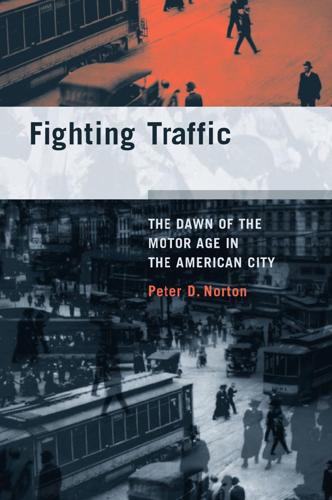
Fighting Traffic: The Dawn of the Motor Age in the American City
by
Peter D. Norton
Published 15 Jan 2008
Carruthers, “Automobile Accidents to Children,” Safety Engineering 49 (May 1925), 189–193 (189); “The Murderous Motor,” New Republic 47 (July 7, 1926), 189–190 (189); “The War after the War” (editorial), Detroit Free Press, August 23, 1927, 6; “The Motor More Deadly Than War,” Literary Digest 94 (August 27, 1927), 12. Notes to Chapter 1 269 14. For a brief review of the historical scholarship on auto safety in America, see introduction. Ralph Nader and Joel W. Eastman have concentrated attention on vehicle design, extending a critique of safety in the 1960s back to the 1920s; see Nader, Unsafe at Any Speed: The Designed-In Dangers of the American Automobile (Grossman, 1965); Eastman, Styling vs. Safety: The American Automobile Industry and the Development of Automotive Safety, 1900–1966 (University Press of America, 1984). Finding little concern for safe vehicle design in the the 1920s, they concluded that safety was not an important issue.
…
Clark), “The White Line Isn’t Enough,” Saturday Evening Post 210 (March 26, 1938), 12–13, 32, 37, 39, 41 (12). 42. Department of Commerce, Bureau of the Census, Historical Statistics of the United States, Colonial Times to 1970 (Government Printing Office, 1975), part 2, 719. 43. In this development, Ralph Nader played the role of a latter-day J. C. Furnas, with greater long-term success. See Nader, Unsafe at Any Speed: The Designed-In Dangers of the American Automobile (Grossman, 1965). 44. For a study of MADD, including a brief history of its origins, see Craig Reinarman, “The Social Construction of an Alcohol Problem: The Case of Mothers Against Drunk Drivers and Social Control in the 1980s,” Theory and Society 17 (Jan. 1988), 91–120.

More: The 10,000-Year Rise of the World Economy
by
Philip Coggan
Published 6 Feb 2020
Back then, fuel was cheap and American car designers indulged their imaginations, creating monster vehicles with grilles that looked like shark’s teeth and tailfins that resembled rockets. In the subsequent decades, the drawbacks of our enthusiasm for cars began to be revealed. In 1965, Ralph Nader published Unsafe at any Speed, a book that detailed the poor safety records of many cars, which at the time lacked seat belts, airbags and other features later regarded as standard. In 1967, the British introduced a legal limit for drivers’ alcohol consumption; US states followed suit in the late 1970s. These safety measures did reduce road fatalities, which peaked in absolute terms in the US at 55,000 per year in the late 1960s; in terms of fatalities per mile travelled, the rate has halved since that period.43 Big changes also came in the 1970s when the surge in oil prices that followed the Yom Kippur War (between Arab nations and Israel) encouraged fuel-efficient cars.
…
“Madeira, sugar and the conquest of nature in the ‘first’ sixteenth century: Part 1: from ‘island of timber’ to sugar revolution, 1420–1506”, Review (Fernand Braudel Center), vol. 32, no. 4, 2009 Morris, Edmund Theodore Rex, HarperCollins, 2002 Morris, Ian War: What Is it Good For? The Role of Conflict in Civilisation, from Primates to Robots, Profile Books, 2015 Nader, Ralph Unsafe at Any Speed: The Designed-In Dangers of the American Automobile, Pocket, 1965 Nagarajan, K.V. “The Code of Hammurabi: an economic interpretation”, International Journal of Business and Social Science, May 2011 Nairn, Alasdair Engines That Move Markets: Technology Investing from Railroads to the Internet and Beyond, John Wiley & Sons, 2002 Neal, Larry, and Williamson, Jeffrey G.

Capitalism in America: A History
by
Adrian Wooldridge
and
Alan Greenspan
Published 15 Oct 2018
MOTOR VEHICLE SALES BY ORIGIN 1931 – 2011 They weren’t even very good at doing what they regarded as their core business, devoting far too little attention to the bread and butter of the industry, reliability and safety. A striking number of these “ocean liners of the road” ran into technological icebergs as they cruised down Eisenhower’s highways and left their passengers stranded by the side of the road. Ralph Nader’s Unsafe at Any Speed (1965) became a bestseller because it diagnosed a national catastrophe. In the 1950s and 1960s, more than 2.5 million Americans were killed in car accidents, and several millions injured. Detroit also devoted far too little attention to fuel efficiency: even after the first oil shock of 1973–74, it continued to produce giant gas-guzzlers, on the assumption that high fuel prices were simply a passing peculiarity, and the world would soon return to the Elysian days of the 1950s.
…
See trade unions Union Station (Chicago), 96 Union Station (Washington, D.C.), 96 United Auto Workers (UAW), 261, 289 United States Bicentennial, 299 United States Rubber Company, 212 United States v. E. C. Knight Company, 159 United Steelworkers (USW), 314–16 University of Chicago, 126 Unsafe at Any Speed (Nader), 313 urbanization, 58, 168, 172, 175–76, 195–96, 427 U.S. Steel, 12, 101, 144, 145 Vanderbilt, Cornelius, 125, 139, 167, 170–71 Vanderbilt, George, 170–71 Van Hise, Charles, 241 Varian Associates, 352 Varney, Walter, 200 Varney Airlines, 200 Veblen, Thorstein, 169–70 venture capital, 352–53, 355 Victorian era, 94–95, 311 Vietnam War, 267, 300, 304, 305 Virginia Company, 8, 134 Visa International, 324 Volcker, Paul, 324–25, 329, 343 Volkswagen Beetle, 318 Volta, Alessandro, 104 von Stade, Francis Skiddy, 364 voter participation rate, 157–58, 158 wages, 174, 175, 301–2, 304, 416.

Evil Geniuses: The Unmaking of America: A Recent History
by
Kurt Andersen
Published 14 Sep 2020
An exposé of the dangers of synthetic pesticides, Rachel Carson’s Silent Spring, had become a number-one bestseller for months and introduced the idea of “the environment” to millions of Americans, which led directly to the creation of the EPA. There was young Ralph Nader, the tenacious lawyer-investigator-activist out of Harvard Law School, whose own damning exposé of corporate irresponsibility, Unsafe at Any Speed: The Designed-In Dangers of the American Automobile, became a bestseller in 1966 and by the end of the year inspired a new federal regulatory bureaucracy to improve car safety. As the 1970s began, Nader was an immensely effective antibusiness celebrity expanding his purview and appeared on the cover of Time for a story about “The Consumer Revolt.”
…
So with ERA ratification stopped in its tracks, the freshly mobilized cultural right now turned its attention to trying to recriminalize abortion. But those kinds of backlash by the religious and the provincials weren’t directly doing besieged corporate America and the serious right, the economic right, any good at all. Silent Spring, Unsafe at Any Speed—and then in the fall of 1970, denouncing big business more existentially, Reich’s Greening of America. It appeared with every possible mainstream blue-chip imprimatur: Yale law professor, prestigious major publisher, Times bestseller list for nine months—and a third of the book filled almost an entire issue of The New Yorker, so that tens of thousands of members of the business classes could have a savage countercultural attack on their oppressive and doomed capitalist system delivered directly to their doorsteps.
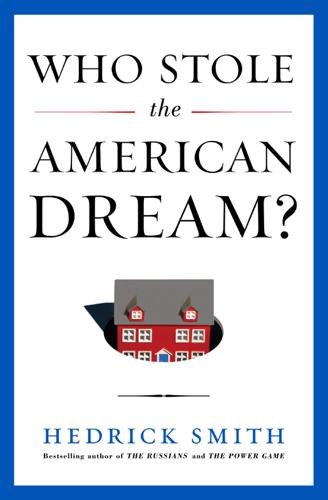
Who Stole the American Dream?
by
Hedrick Smith
Published 10 Sep 2012
People took U.S. economic growth for granted, and they wanted higher standards, better quality, and greater transparency from industry. More than any other single person, Ralph Nader put middle-class consumer activism on the political map. A public figure of no small ego, Nader knew how to work the press, the public, and politicians. His 1965 book, Unsafe at Any Speed, captured public attention with the charge that America’s Big Three carmakers were responsible for many automobile accidents because they were marketing cars that were mechanically and technically unsafe. Nader’s network ranged widely. His Center for the Study of Responsive Law, whose staff proudly called themselves “Nader’s Raiders,” grew from just five people in 1967 to two hundred in 1971.
…
AUGUST 1965—Voting Rights Act is pushed through Congress by President Johnson, on the momentum of massive grassroots civil rights demonstrations. The act removes legal obstacles to the right to vote for African Americans, especially in southern states. 1965—Consumer advocate Ralph Nader publishes his searing attack on U.S. auto industry, Unsafe at Any Speed, charging automakers with marketing defective cars, and giving consumer activism new political leverage. The burgeoning consumer movement presses Congress and the White House to create new watchdog agencies and standards for truth in packaging and truth in lending. NOVEMBER 1967—Pat O’Neill, at nineteen, starts a thirty-five-year career with United Airlines as a jet airline mechanic, working the overnight “graveyard shift” at Chicago’s O’Hare field.
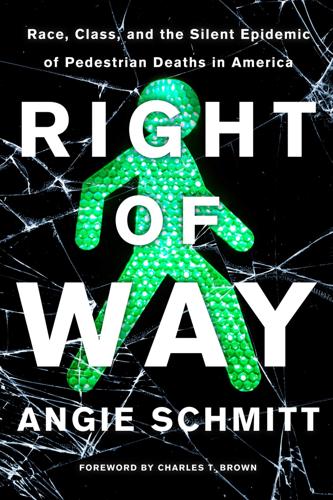
Right of Way: Race, Class, and the Silent Epidemic of Pedestrian Deaths in America
by
Angie Schmitt
Published 26 Aug 2020
Finally, late in 2019, the NHTSA announced that it would be updating its five-star rating system to “consider new technologies tied to the safety of pedestrians and other vulnerable road users such as cyclists.”43 Exactly what is in the new rule will not be known until it is released, but according to the NHTSA news release, it seems that the agency will limit its ratings to whether or not cars include partially automated features like automatic emergency braking or automatic pedestrian detection. The NHTSA will likely stop short of evaluating how different body designs and different vehicle styles affect pedestrian safety. Back in the 1960s and 1970s, after Ralph Nader published Unsafe at Any Speed, these kinds of improvements—passive safety features, features that protect someone from devastating injury even in the event of a crash—were added to the interior of cars. Additions like airbags, seat belts, and padded dashboards all help absorb the impact of the blow when someone seated inside a car is in a crash.
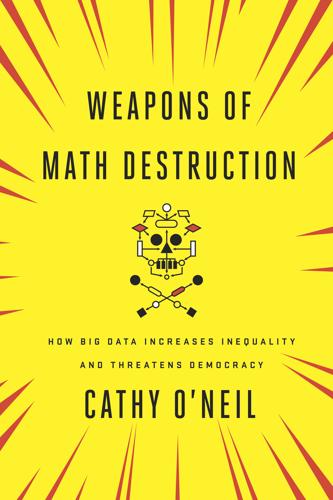
Weapons of Math Destruction: How Big Data Increases Inequality and Threatens Democracy
by
Cathy O'Neil
Published 5 Sep 2016
—Cory Doctorow, author of Little Brother and co-editor of Boing Boing “Many algorithms are slaves to the inequalities of power and prejudice. If you don’t want these algorithms to become your masters, read Weapons of Math Destruction by Cathy O’Neil to deconstruct the latest growing tyranny of an arrogant establishment.” —Ralph Nader, author of Unsafe at Any Speed “Next time you hear someone gushing uncritically about the wonders of Big Data, show them Weapons of Math Destruction. It’ll be salutary.” —Felix Salmon, Fusion “From getting a job to finding a spouse, predictive algorithms are silently shaping and controlling our destinies. Cathy O’Neil takes us on a journey of outrage and wonder, with prose that makes you feel like it’s just a conversation.
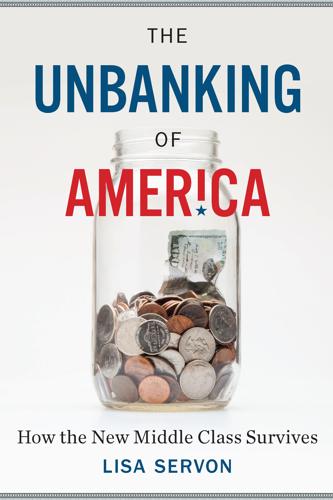
The Unbanking of America: How the New Middle Class Survives
by
Lisa Servon
Published 10 Jan 2017
Dodd-Frank mandated the creation of the Consumer Financial Protection Bureau (CFPB) in 2011 in order to “make markets for consumer financial products and services work for Americans.” Elizabeth Warren had conceived of this idea in 2007, before the crisis. A Harvard Law School professor at the time, she wrote an article titled “Unsafe at Any Rate,” a reference to Ralph Nader’s 1965 book Unsafe at Any Speed. Warren argued for a government consumer-financial-protection agency akin to the Consumer Product Safety Commission created under President Nixon in 1972. To make her point, she likened credit cards and mortgages to toasters and microwaves: It is impossible to buy a toaster that has a one-in-five chance of bursting into flames and burning down your house.
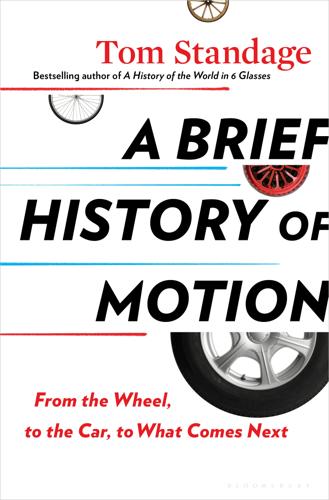
A Brief History of Motion: From the Wheel, to the Car, to What Comes Next
by
Tom Standage
Published 16 Aug 2021
“It is now possible to drive across the face of the nation without feeling you’ve been anywhere or that you’ve done anything,” he wrote. But his claim that Americans had finally fallen out of love with the automobile turned out to be incorrect. Car sales, and the economy, rebounded later in the year. The anti-car books in the 1960s, most famously Ralph Nader’s Unsafe at Any Speed: The Designed-In Dangers of the American Automobile (1965), focused on safety problems, and the industry’s failure to address them. Rather than calling for the end of the car, though, these books (with titles including Highway Homicide and Licensed to Kill) took for granted the central place of the automobile in modern life and demanded action to make it safer.

Street Smart: The Rise of Cities and the Fall of Cars
by
Samuel I. Schwartz
Published 17 Aug 2015
“Huh?” I replied. (I wasn’t a very smooth talker.) Was that even a field? Brian told me MIT had been studying traffic and maybe that’d suit me. I did have an interest in traffic safety after my friend’s brakes failed on his ’55 Chevy and we crashed into a tollbooth. I had read Ralph Nader’s Unsafe at Any Speed. So I investigated graduate programs in the study of traffic and transportation and discovered them hidden away in the departments of civil engineering. I applied to a few schools and was accepted by MIT and the University of Pennsylvania. The choice wasn’t especially difficult: Penn offered me a full fellowship, plus a stipend of $75 a week.

The Age of Stagnation: Why Perpetual Growth Is Unattainable and the Global Economy Is in Peril
by
Satyajit Das
Published 9 Feb 2016
A young management consultant, Peter Drucker, doubted that a company could forecast its ability to meet such obligations decades into the future.6 In the 1950s and early 1960s, the immense profitability of GM and favorable economics supported the schemes. In the late 1960s, GM's profitability declined. With car ownership having reached very high levels, the market was saturated. In 1965, Ralph Nader's bestselling Unsafe at Any Speed drew unwelcome attention to the auto industry's safety issues, mechanical defects, and quality problems, placing additional pressure on earnings. Then came the oil shocks of the 1970s and an increased demand for compact, fuel-efficient vehicles, which US car makers had shunned in favor of ever larger, more powerful dream machines.

Driverless: Intelligent Cars and the Road Ahead
by
Hod Lipson
and
Melba Kurman
Published 22 Sep 2016
The auto industry, once a magnet for the boldest designers and most expert technologists, was forced to grow up and face the consequences of a world where cars were no longer a novelty. Cars and highways had become a practical tool of everyday life. Consumer advocate Ralph Nadar’s instant 1965 classic book Unsafe at Any Speed exposed the shoddy engineering practices at the big auto companies, meticulously detailing the safety problems of the Chevy Corvair and the auto industry’s overemphasis on styling and profit margins over driver safety. The book was a best seller, and it motivated the passage of the National Traffic and Motor Vehicle Safety Act of 1966 and the passage of seat-belt laws in 49 states (the sole holdout being New Hampshire).
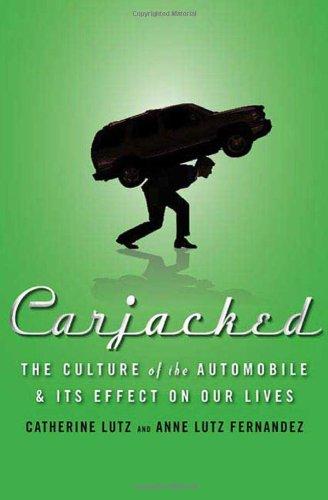
Carjacked: The Culture of the Automobile and Its Effect on Our Lives
by
Catherine Lutz
and
Anne Lutz Fernandez
Published 5 Jan 2010
Is he a crazy driver?’” Influential research done in the 1960s by Detroit doctor Clair Straith and engineer Hugh DeHaven shifted the focus by pointing out that vehicle reengineering—softening rigid dashboards, eliminating sharp buttons, and adding restraining belts—would save lives. Ralph Nader’s Unsafe at Any Speed (1965), the consumer rights movement more generally, and what one historian calls “the smoldering dissatisfaction with Detroit’s marketing and design policies,” including rampant dealer fraud, “banded into a ‘perfect storm’ of regulatory reform in the early 1960s.”22 Americans thereafter would come to rely on car engineers to keep them safe; they expected scientists to make it, as crazy as it sounds, “safe to crash.”
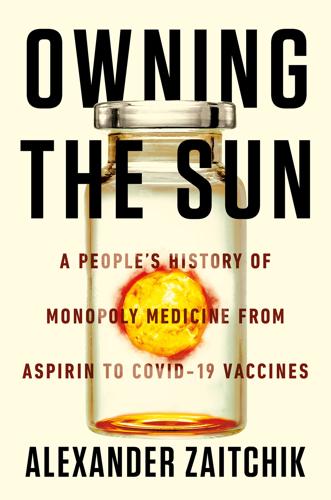
Owning the Sun
by
Alexander Zaitchik
Published 7 Jan 2022
Nelson and the cause of patent reform entered the 1970s with a new ally at their side: the national consumer rights movement. The face of this movement was a young lawyer named Ralph Nader, famous for challenging the automobile industry with the public safety argument described in his 1965 exposé, Unsafe at Any Speed.31 The industry’s recent success in loosening the Kennedy patent policy at HEW, meanwhile, was a limited one. The Nixon administration adopted a relatively hard line on antitrust similar to its Democratic predecessors. In 1970, a deputy attorney general in the Justice Department announced a “watch list” of nine patent and licensing practices that would be prosecuted as anticompetitive restraints of trade.
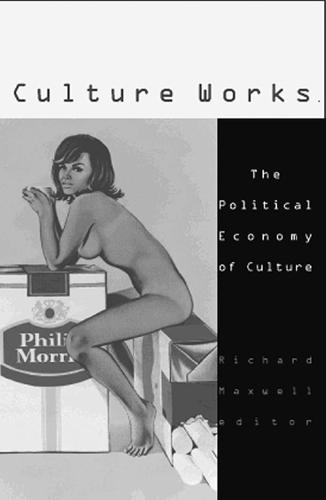
Culture works: the political economy of culture
by
Richard Maxwell
Published 15 Jan 2001
See, for example, Susan Faludi, Backlash: The Undeclared War against American 105 Inger 60. 61. 62. 63. 64. 65. 66. 67. 106 L. Sto l e Women (New York: Doubleday, 1994), first published by Crown Publishers in 1991; Naomi Wolf, The Beauty Myth: How Images of Beauty Are Used against Women (New York: Doubleday, 1994), first published by William Morrow in 1991. See, for example, Ralph Nader, Unsafe at Any Speed (New York: Grossman Publishers, 1965); Ralph Nader, ed., The Consumer and Corporate Accountability (New York, Chicago, San Francisco, and Atlanta: Harcourt Brace Jovanovich, 1973). For an excellent discussion of the rise of commercial mass media, see Gerald J. Baldasty, The Commercialization of News in the Nineteenth Century (Madison: University of Wisconsin Press, 1992).
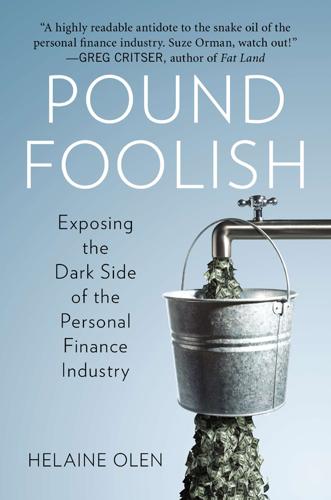
Pound Foolish: Exposing the Dark Side of the Personal Finance Industry
by
Helaine Olen
Published 27 Dec 2012
As for Porter’s written work, the once feisty and fearless creator of the personal finance genre was now putting her name on fuddy-duddy articles about budgeting secrets, and was more than once caught publishing corporate press releases under her own name. Her practical money management tips were no longer unique. Moreover, the nature of what we wanted from a public personal finance guru was changing, too. The consumer movement, which burst into prominence with Ralph Nader’s Unsafe at Any Speed, his 1965 exposé of the automobile industry, began to shove personal finance in a new direction, one that questioned the powers that be more than Porter had done in years. There was an irony here. Porter’s ever-increasing wealth and rapaciousness ultimately left her cut off, unable to connect with the concerns of all too many of us, a pattern we would see repeat with other personal finance gurus over the years.
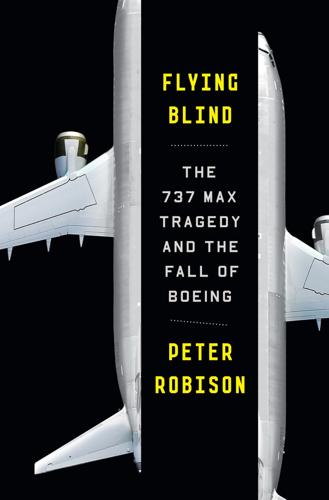
Flying Blind: The 737 MAX Tragedy and the Fall of Boeing
by
Peter Robison
Published 29 Nov 2021
He finished twenty-sixth out of twelve hundred riders. 12 Blood Money Samya Stumo came from a family that had an unusually good grasp of how power is wielded in Washington. Her mother, Nadia Milleron, is the niece of Ralph Nader, the lawyer, former Green Party presidential candidate, and famed consumer crusader. His bestselling 1965 exposé of the automobile industry, Unsafe at Any Speed, led to seat-belt laws. The book had enraged General Motors and made the Chevrolet Corvair—the car whose steering wheel tended to impale its driver in crashes—infamous. Nader is perhaps more responsible than anyone else for the great number of consumer-focused regulatory agencies that emerged in the early 1970s—among them the National Highway Traffic Safety Administration, the Consumer Product Safety Commission, and the Environmental Protection Agency.
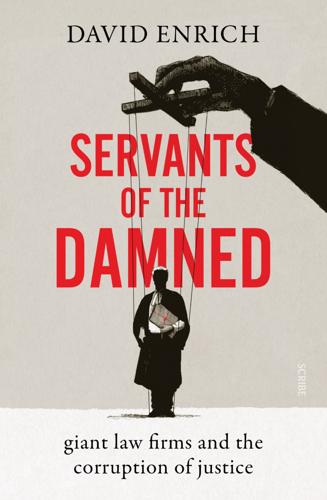
Servants of the Damned: Giant Law Firms and the Corruption of Justice
by
David Enrich
Published 5 Oct 2022
He won, trotting out a chalkboard to document the contradictory statements by the plaintiff, who claimed to have hurt his back at a Chevy plant. That was the beginning of McCartan’s vaunted career as a trial lawyer. A series of impressive victories followed. He successfully defended Firestone Tire in what had looked like an unwinnable patent case. He managed to convince a jury that GM’s notorious Corvair—unsafe at any speed—was a decade ahead of its time in terms of safety. McCartan fended off Mobil’s attempted hostile takeover of Marathon Oil, a longtime Jones Day client. The triumphs earned him a front-page Wall Street Journal profile with the headline “Top Trial Lawyer Gets Firms Out of Trouble With Quiet Efficiency.”
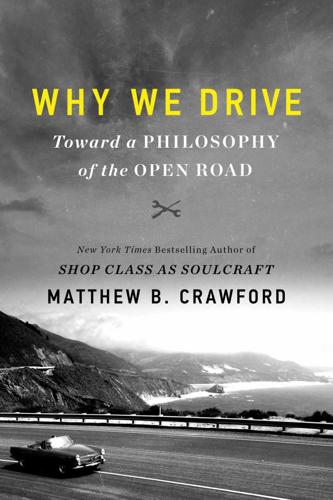
Why We Drive: Toward a Philosophy of the Open Road
by
Matthew B. Crawford
Published 8 Jun 2020
You go fast into a corner (I use the term “fast” in a purely subjective way), lift off the throttle to get a little forward weight transfer while simultaneously jerking the steering wheel, and the rear steps out. Now you’re steering into the slide and feeling like an action hero at twenty miles per hour. The quirky handling that results when you combine a rear-mounted engine with a swing axle is what led Ralph Nader to famously proclaim the Corvair “unsafe at any speed.” What he didn’t mention is that such a car is also “fun at every speed.” My sweetest teenage memories are of driving up to the posh Claremont Resort, whose white tower shines resplendent over Berkeley, and honing my skills in a sloppy slalom through the parking lot amidst the Jaguars and Mercedes.
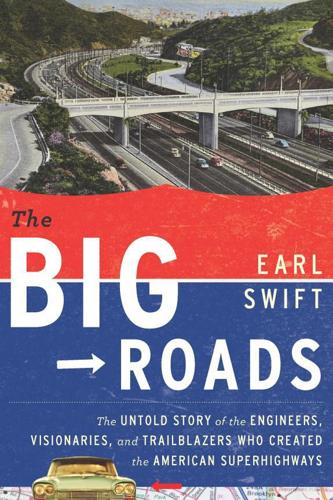
The Big Roads: The Untold Story of the Engineers, Visionaries, and Trailblazers Who Created the American Superhighways
by
Earl Swift
Published 8 Jun 2011
In "The American Way of Death," published in the New York Review of Books in April 1966, Mumford reprised his attack on "that religion for whose evidences of power and glory the American people, with eyes devoutly closed, are prepared to sacrifice some 59,000 lives every year, and to maim, often irreparably, some three million more." Most of the article, a review of Ralph Nader's Unsafe at Any Speed, was a diatribe against the automobile itself, which "could have made an invaluable contribution in creating a regional distribution of population" but instead accounted for some of the greatest crises facing city and countryside alike—"the nightmare of the air becoming toxic with poisonous exhausts, including the highly lethal carbon monoxide; of the water supply polluted with deadly lead from gasoline exhausts already half way to the danger point even in the Arctic wastes; the nightmare of diurnal mass commutation by car... ."

Swindled: the dark history of food fraud, from poisoned candy to counterfeit coffee
by
Bee Wilson
Published 15 Dec 2008
The symptoms of the illness were a heightened sensitivity and an abandonment of normal behaviour among otherwise happygo-lucky businesspeople; in other words, a terror in the face of the damage that consumer activists could do to the food industry.136 Plenty of manufacturers were suffering from this malaise. Ralph Nader’s main target, famously, was the automobile industry. From 1965 onwards, Nader had attacked General Motors for producing cars that were “unsafe at any speed.” Since then, his advocacy of consumer causes had widened out to include drug companies, air pollution, and foods that were unsafe in any amount. In 1970, Nader’s Study Group published The Chemical Feast, a blistering attack on the American food supply and the FDA’s failure to police it. Nader directly compared his work to that of Upton Sinclair.
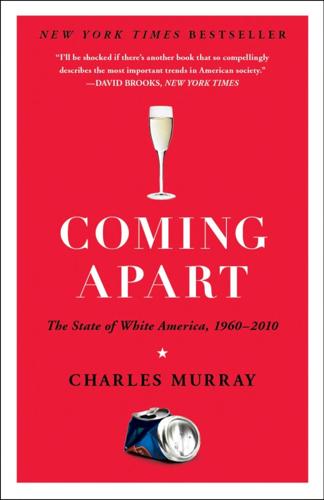
Coming Apart: The State of White America, 1960-2010
by
Charles Murray
Published 1 Jan 2012
Rachel Carson’s Silent Spring had appeared in 1962 and become a New York Times best seller, setting off public interest that would lead to the environmental movement. Ralph Nader had written his first attack on the auto industry in the Nation, and two years later would found the consumer advocate movement with Unsafe at Any Speed. The cultural landscape of the Sixties was already taking shape in 1963. Bob Dylan’s “Blowin’ in the Wind,” “A Hard Rain’s a-Gonna Fall,” and “Don’t Think Twice, It’s All Right”—all theme songs for what we think of as the Sixties—had been released six months before Kennedy died. In November 1963, the Beatles had played for the queen, were the hottest group in England, and were planning their first U.S. tour.

The Wires of War: Technology and the Global Struggle for Power
by
Jacob Helberg
Published 11 Oct 2021
“In its place we are entering a period of consequences.”36 As America enters its own period of consequences, we need to sound the alarm as well. Before Rachel Carson’s Silent Spring in 1962, most Americans had only the faintest inkling that big agricultural companies were poisoning the environment. Before Ralph Nader’s Unsafe at Any Speed in 1965, most consumers were only vaguely aware that Americans were dying at appalling rates in automobile accidents. But once Americans were awakened to the danger, they were able to focus on the problem and craft creative solutions. The time has come to open our eyes fully to the threat we face from autocracies like Russia and China in cyberspace—a danger that some Americans may sense but few truly understand.

The Rise and Fall of American Growth: The U.S. Standard of Living Since the Civil War (The Princeton Economic History of the Western World)
by
Robert J. Gordon
Published 12 Jan 2016
The cause was determined to be pilot error, as the pilot’s aggressive use of the rudder caused the tail of the plane to snap off, and before the aircraft hit the ground, both engines had fallen off the wing. These three incidents with their very different causes—inadequate air traffic control, faulty maintenance, and pilot error—appear to have taught airlines and aircraft manufacturers many lessons. To quote the title of Ralph Nader’s famous book, air travel was initially “unsafe at any speed” but now is safer than walking across the street. AIRLINE PRICES AND THE INITIAL PROMISE OF AIRLINE DEREGULATION In the history of the U.S. airline industry since World War II, one theme stands out. Air travel rapidly made the transition from a travel mode that was relatively dangerous and expensive to one that opened the world as an affordable destination for millions of Americans.
…
Cray Inc. webpage on “Company History.” www.cray.com/About/History.aspx. Cronon, William. (1991). Nature’s Metropolis: Chicago and the Great West. New York/London: W. W. Norton. Crossen, Cynthia. (2007). “Before WWI Began, Universal Health Care Seemed a Sure Thing,” Wall Street Journal, April 30, p. B1. Crossen, Cynthia. (2008). “Unsafe at Any Speed, with Any Driver, on Any Kind of Road,” Wall Street Journal, March 3, p. B1. Cutler, David M. (2006). “An International Look at the Medical Care Financing Problem,” in David Wise and Naohiro Yashiro, eds., Issues in Health Care in the U.S. and Japan. Chicago, IL: University of Chicago Press, 69–81.

People, Power, and Profits: Progressive Capitalism for an Age of Discontent
by
Joseph E. Stiglitz
Published 22 Apr 2019
Bureau of Labor Statistics, All Employees: Government: Federal, Except U.S. Postal Service [CES9091100001], retrieved from FRED, Federal Reserve Bank of St. Louis; https://fred.stlouisfed.org/series/CES9091100001. Accessed Jan. 24, 2019). 10.This was the case before auto safety legislation, as documented by Ralph Nader in his classic book, Unsafe at Any Speed: The Designed-In Dangers of the American Automobile (New York: Pocket Books, 1965). 11.A president who claims an unfettered right to pardon himself and those who serve him is a president who claims unbridled authoritarian power, to be reined in by the single ultimate check provided by the Constitution, impeachment; and with such solid support among his own party (removing a president from office requires a two-thirds vote of the Senate), and with such overbearing confidence that he could claim that he could “shoot somebody” on Fifth Avenue and still not lose his loyal voters, he seems to have little to fear from that quarter. 12.Many important ones have received little notice: a simple change that removes the deference previously given to one’s own physician in disability proceedings may result in large numbers being denied disability payments. 13.According to OECD data, in 2017, US real GDP per capita grew somewhat slower than the average of the OECD, but in 2018 it was somewhat greater. 14.In Rewriting the Rules of the American Economy, my coauthors and I describe globalization and technology as the large underlying global forces that then get translated through the rules that structure our economy into our daily experiences, including those that lead to inequality and exclusion.
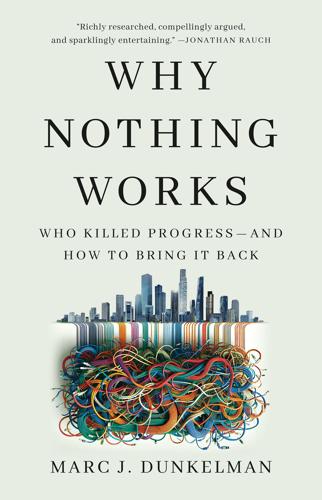
Why Nothing Works: Who Killed Progress--And How to Bring It Back
by
Marc J Dunkelman
Published 17 Feb 2025
The so-called credibility gap that separated military propaganda from reality became, for many boomers, a frame for understanding not just the Johnson administration but also institutions of power more generally.84 Nearly everything the government proclaimed would eventually become suspect.85 Establishment figures claimed to be accounting for the nation’s long history of racism and prejudice—but were they actually in bed with the bigots? They claimed to be protecting the environment—but, as Rachel Carson exposed in Silent Spring (1962), big agriculture was poisoning the nation’s crops and farmland.86 The gospel of balance had promised that big industry would deliver great prosperity at falling prices—but Ralph Nader’s Unsafe at Any Speed (1965) revealed that regulators were allowing the automobile industry to sell death traps on wheels.87 The pattern was endemic. It wasn’t just that the Establishment no longer deserved the benefit of the doubt; big government began to appear entirely unworthy of the public’s trust. The specifics differed from realm to realm, but the core complaint remained the same.
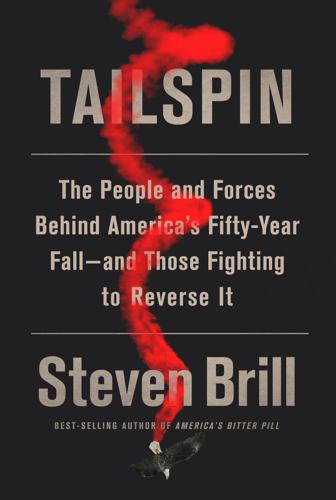
Tailspin: The People and Forces Behind America's Fifty-Year Fall--And Those Fighting to Reverse It
by
Steven Brill
Published 28 May 2018
NO MORE “APPEASEMENT” Nader also played a key role in fomenting a boomerang effect of far broader dimensions, causing the new, expanded use of the First Amendment to upend the balance of power in America between those at the top and everyone else. Nader had risen to prominence in 1965, with the publication that year of his attack on the automobile industry, Unsafe at Any Speed, which focused on General Motors. He then achieved star status because of media reaction to GM’s clumsy attempts to smear him by hiring private investigators to look into his personal life. His reach had since expanded on multiple fronts. Donors contributed millions of dollars to support Nader’s Raiders—teams of students coming out of college and law school organized to do research and issue reports (with headline-grabbing press releases) on all varieties of alleged business abuses, which the Raiders’ legal teams then brought suits to stop.

Fancy Bear Goes Phishing: The Dark History of the Information Age, in Five Extraordinary Hacks
by
Scott J. Shapiro
In a court ruling on whether General Motors was negligent for not including widespread safety features in a 1961 station wagon, the court rejected the claim because a “manufacturer is not under a duty to make his automobile accident-proof or foolproof.” But in 1966, a year after Ralph Nader published Unsafe at Any Speed, in which he charged car companies with resisting safety improvements, Congress passed the National Traffic and Motor Vehicle Safety Act, refocusing automobile safety on the vehicle, rather than the driver. Today, similar concerns are expressed about software liability: tech is too important to our society to be slowed down, yada yada yada.

The Relentless Revolution: A History of Capitalism
by
Joyce Appleby
Published 22 Dec 2009
Waiting in the wings were hundreds of experts who had been studying just how destructive the twentieth century had been to the planet that we inhabit. Environmentalists mounted one of the most successful political movements in history. In 1962 Michael Harrington in his The Other America: Poverty in the United States reminded the public that not everyone was prospering. Three years later Ralph Nader’s Unsafe at Any Speed took on America’s automakers; its subtitle delivers the message: The Designed-in Dangers of the American Automobile. Their words seemed even more prophetic with the multiple blows of an oil crisis, rising unemployment, and an inflation rate spiraling upward. A younger generation took up the causes of the degrading environment, product safety, and the persisting plight of the poor and made them their own.
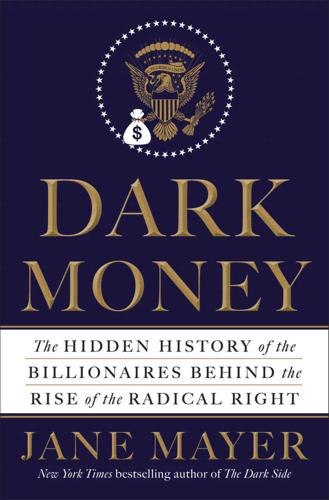
Dark Money: The Hidden History of the Billionaires Behind the Rise of the Radical Right
by
Jane Mayer
Published 19 Jan 2016
All summer long, he clipped magazine and newspaper articles documenting the political threat. He was particularly preoccupied with Ralph Nader, the young Harvard Law School graduate whom Daniel Patrick Moynihan, then assistant secretary of labor, had hired to investigate auto safety hazards. Nader’s 1965 exposé on General Motors, Unsafe at Any Speed, accused the auto industry of putting profits ahead of safety, triggering the American consumer movement and undermining Americans’ faith in business. Powell was a personal friend of General Motors’ corporate counsel and regarded this and other anticorporate developments with almost apocalyptic alarm.
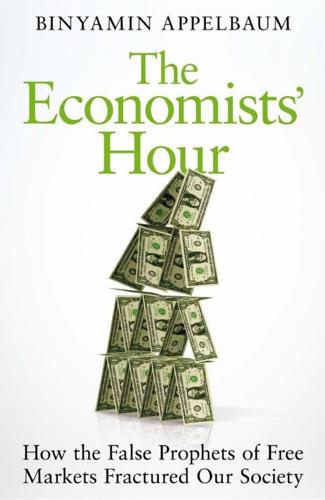
The Economists' Hour: How the False Prophets of Free Markets Fractured Our Society
by
Binyamin Appelbaum
Published 4 Sep 2019
The Scales More than fifty thousand Americans died in car crashes each year during the mid-1960s, a spectacular volume of carnage that inspired its own sound track, most famously “Last Kiss,” in which the singer heads “out on a date in my daddy’s car.” The government tried for years to reduce road deaths by emphasizing the personal responsibility of drivers, but the very word “accident” implies the limits of that approach. In 1965, Ralph Nader’s bestselling book, Unsafe at Any Speed, reshaped the public debate. Nader argued accident victims were hurt not by the initial crash but by the “second collision” with the interiors of their own vehicles. Accidents were inevitable, but injuries could be prevented — and car companies were hardly trying. The industry had an appalling record of indifference to the lives of its customers.22 Nader’s attack on the car companies was an attack on the primacy of markets.

Power and Progress: Our Thousand-Year Struggle Over Technology and Prosperity
by
Daron Acemoglu
and
Simon Johnson
Published 15 May 2023
In consequence, the political and economic landscape of the United States looked very different by the 1970s than in the early decades of the twentieth century. Gone was the overwhelming political and economic clout of mega-businesses, such as the Carnegie Steel Company and John D. Rockefeller’s Standard Oil. Emblematic of these changes was the consumer protection activism led by Ralph Nader, whose book Unsafe at Any Speed, published in 1965, was a manifesto for keeping corporations accountable. In this instance, activism focused on automobile manufacturers, although Nader’s target was all misbehaviors by business, especially big business. Several iconic government regulations resulted from consumer activism.

The Code: Silicon Valley and the Remaking of America
by
Margaret O'Mara
Published 8 Jul 2019
Gary Reback was on the program, pointing out the flattering entries about Gates in Microsoft’s online encyclopedia, Encarta. Netscape lawyer Roberta Katz warned that Microsoft was boxing competitors out of its new online shopping center. Ralph Nader’s star had been fading, but the fight against Bill Gates gave him a way to reclaim his old mantle as America’s #1 fighter for the little guy. The software giant was unsafe at any speed, Nader warned, and it should not be allowed to take over the online future. “Not content with its enormous market share in PC software, Microsoft wants to hold our hand as we navigate the information superhighway,” Nader wrote, “and to push us—not so subtly—toward its own partners or subsidiaries by strategically placing desktop or browser links to its products and services.”

From Beirut to Jerusalem
by
Thomas L. Friedman
Published 1 Jan 1989
Every Beirut driver knows the radio lexicon: a road described as amina is totally secured by army or police; a road described as salika is free of snipers or kidnappers, but not policed; hatherah means the road is passable, but with a roughly 30 percent chance of kidnapping or sniping; and finally, ghair amina means the road is unsafe at any speed. Part of learning how to view one’s environment selectively is learning to make oneself numb to some of the more grotesque scenes that are part of the texture of life in Beirut. Terry Prothro, the American University psychologist, used to say that in Beirut, at least, the ability to repress things was not necessarily pathological.

Enlightenment Now: The Case for Reason, Science, Humanism, and Progress
by
Steven Pinker
Published 13 Feb 2018
Over the short run they sometimes pushed against each other, but over the long run they collectively pulled the death rate down, down, down. At times there were moral crusades to reduce the carnage, with automobile manufacturers as the villains. In 1965 a young lawyer named Ralph Nader published Unsafe at Any Speed, a j’accuse of the industry for neglecting safety in automotive design. Soon after, the National Highway Traffic Safety Administration was established and legislation was passed requiring new cars to be equipped with a number of safety features. Yet the graph shows that steeper reductions came before the activism and the legislation, and the auto industry was sometimes ahead of its customers and regulators.